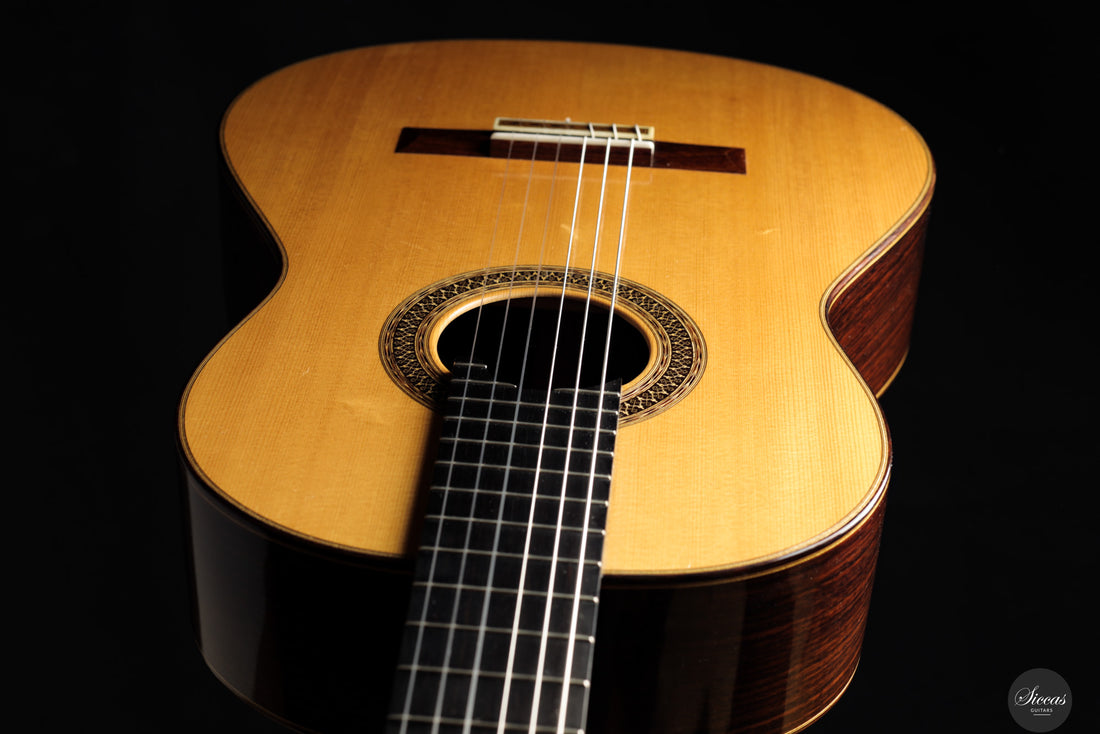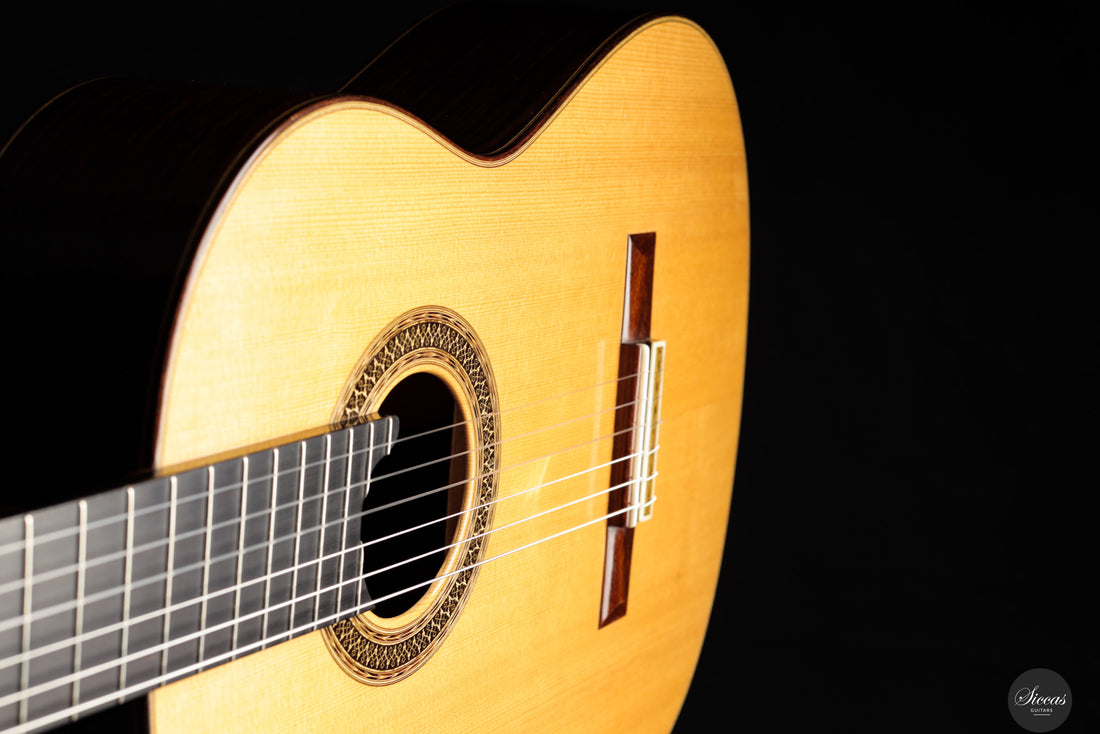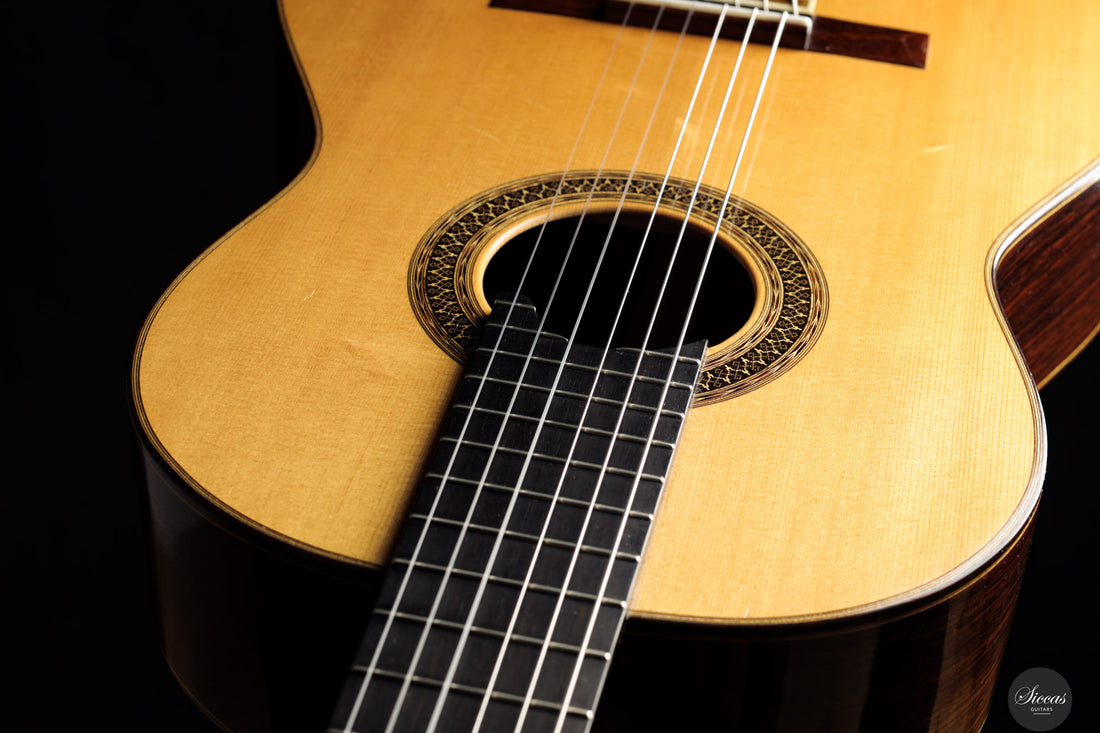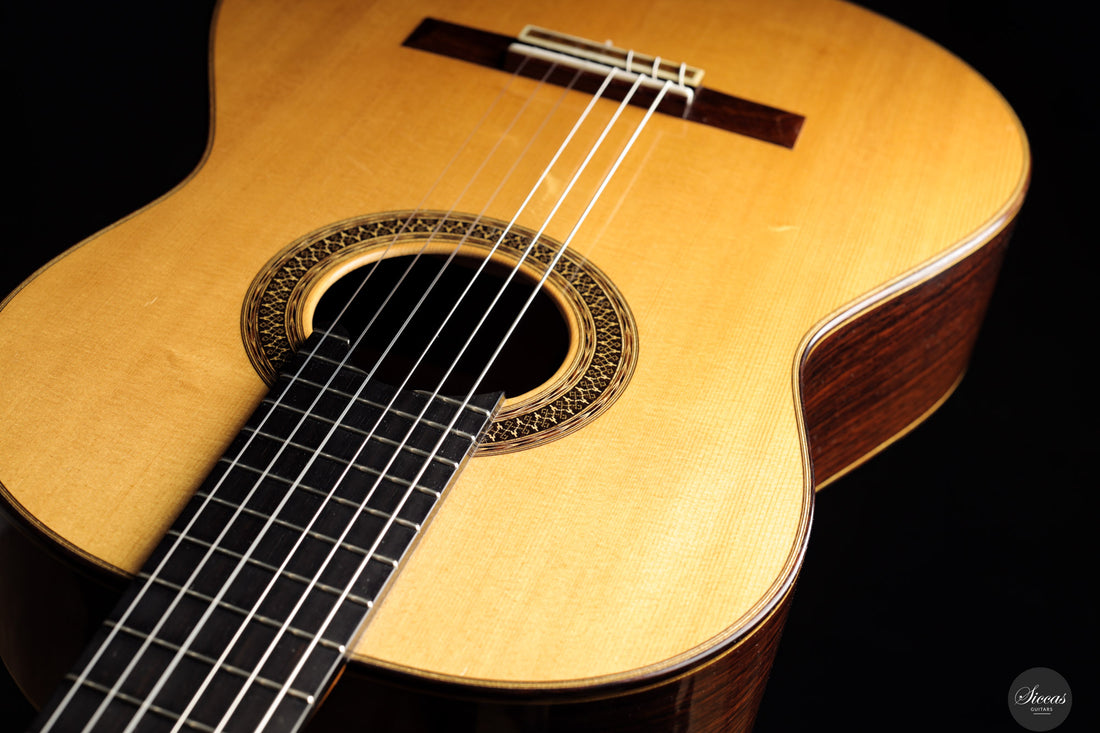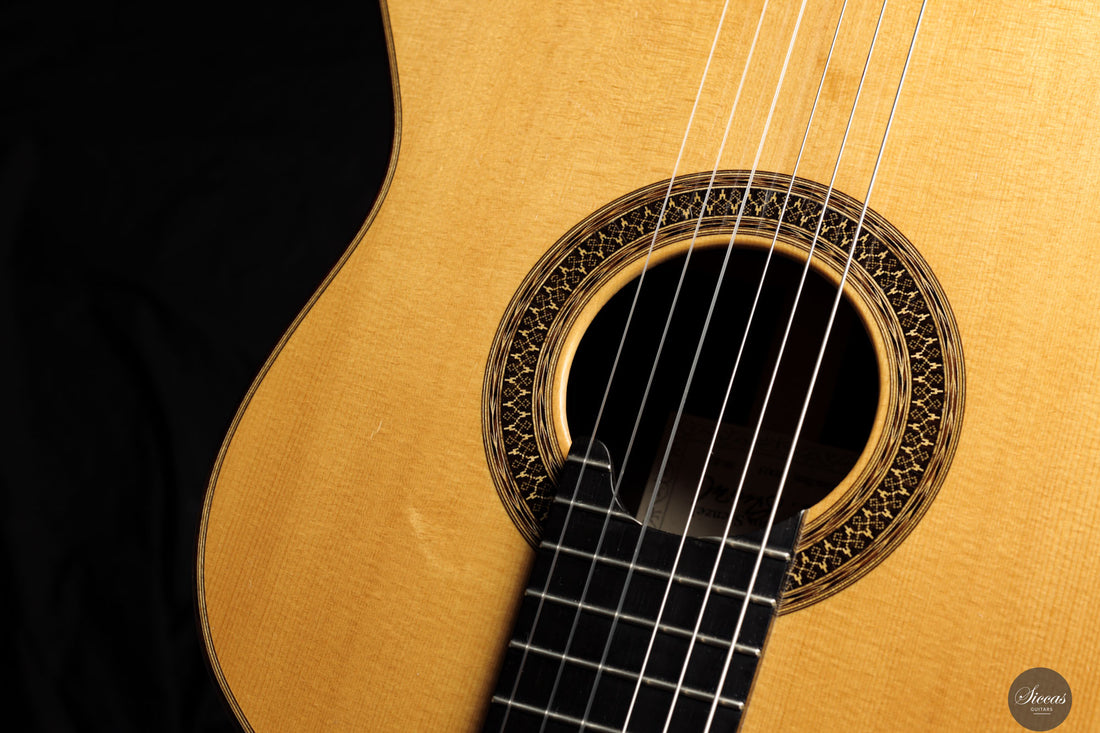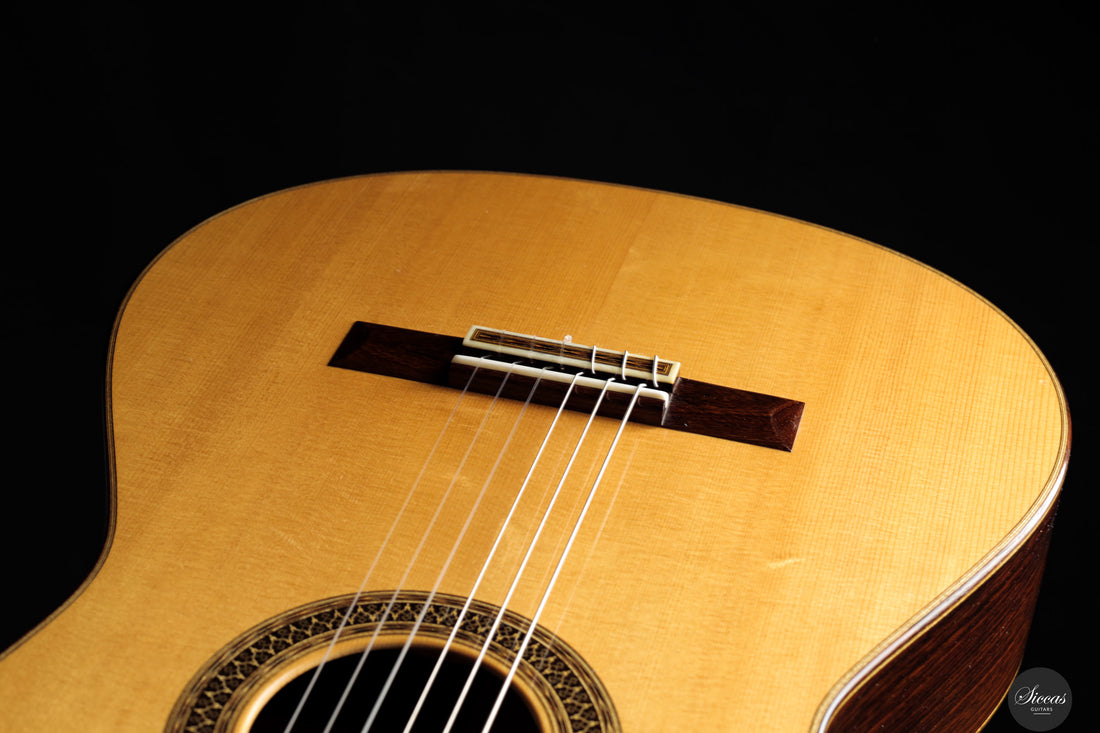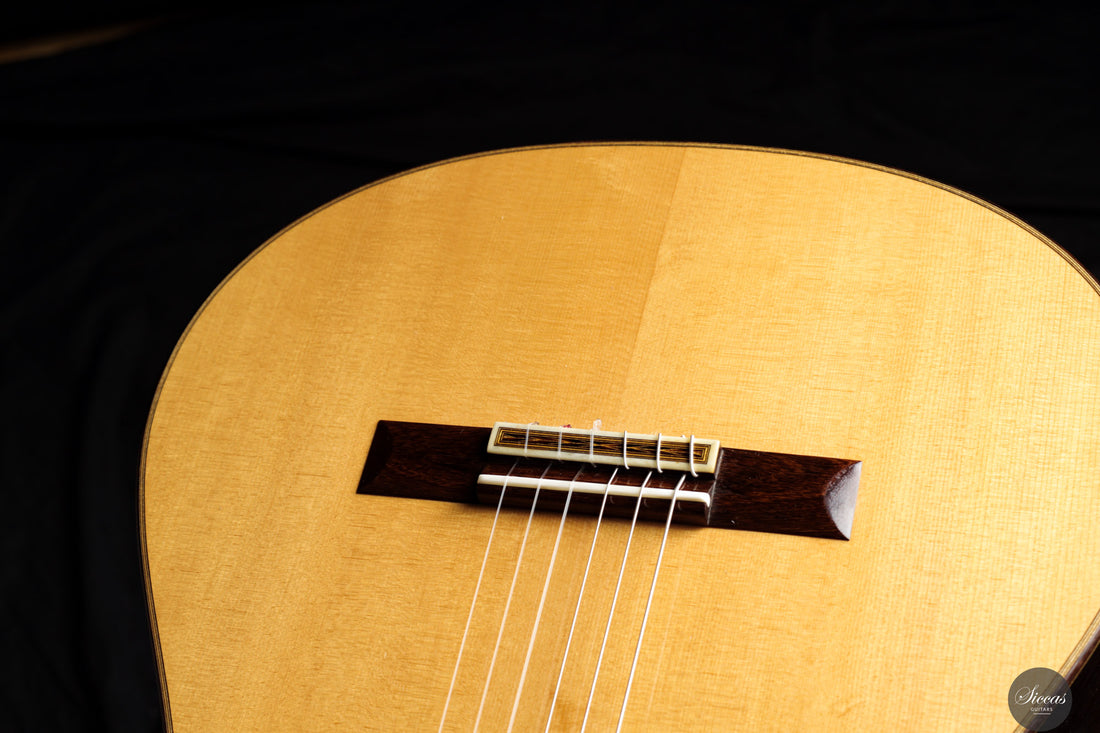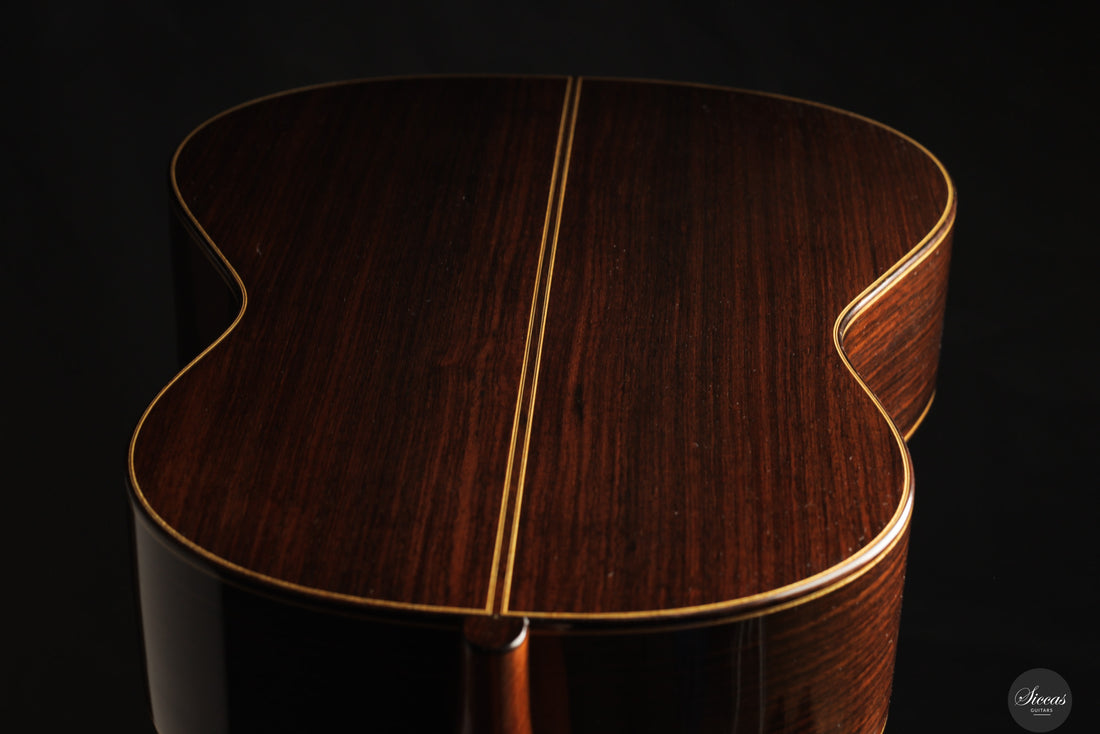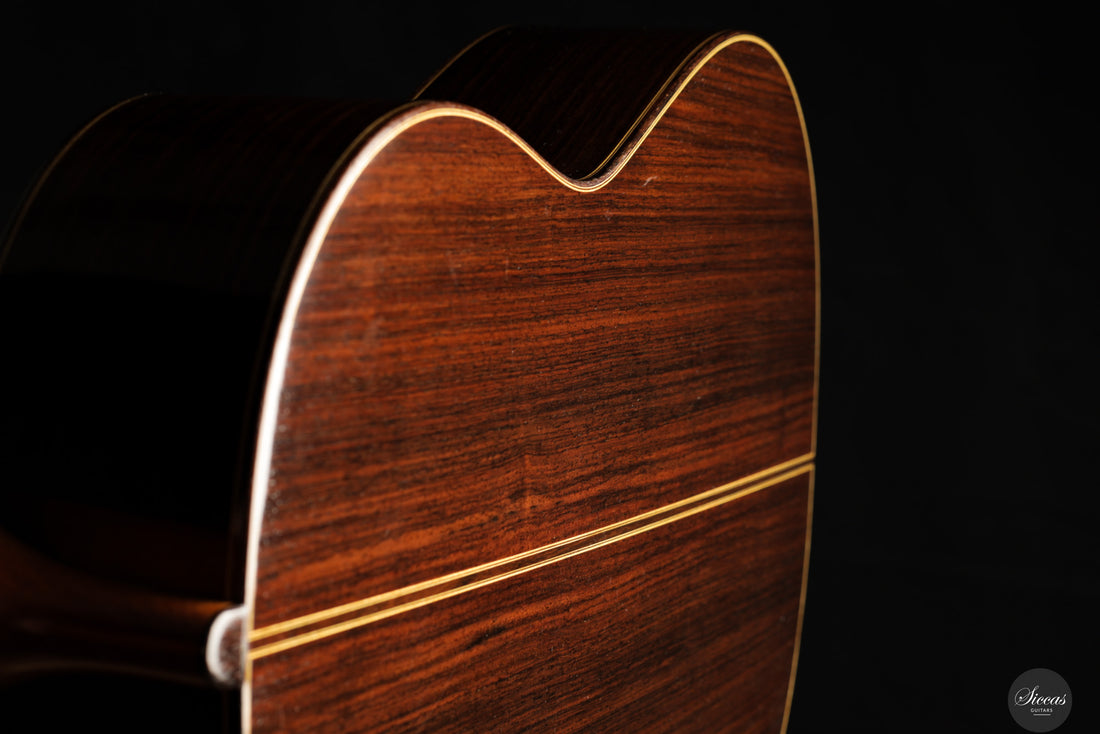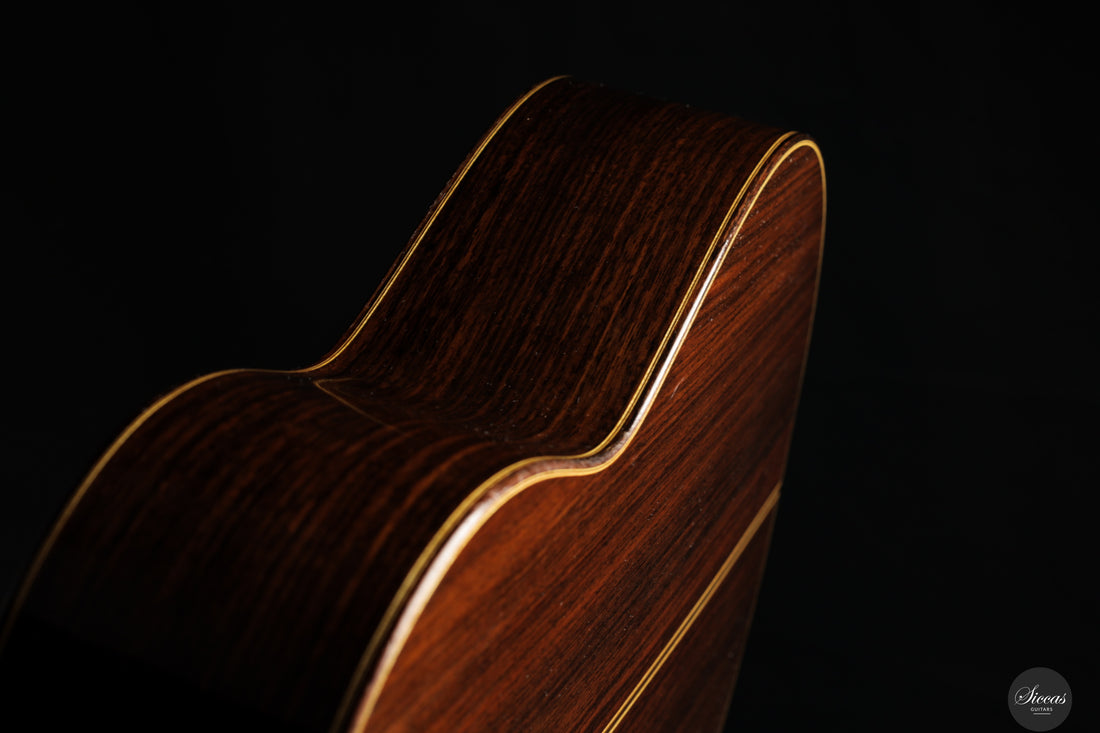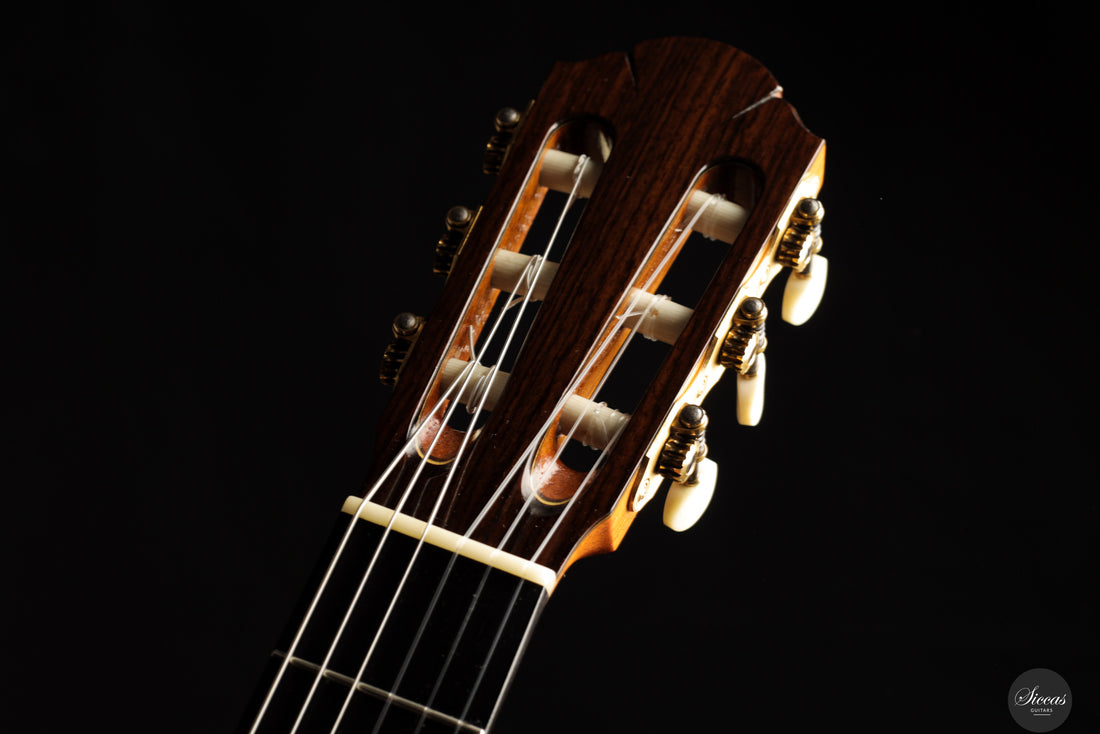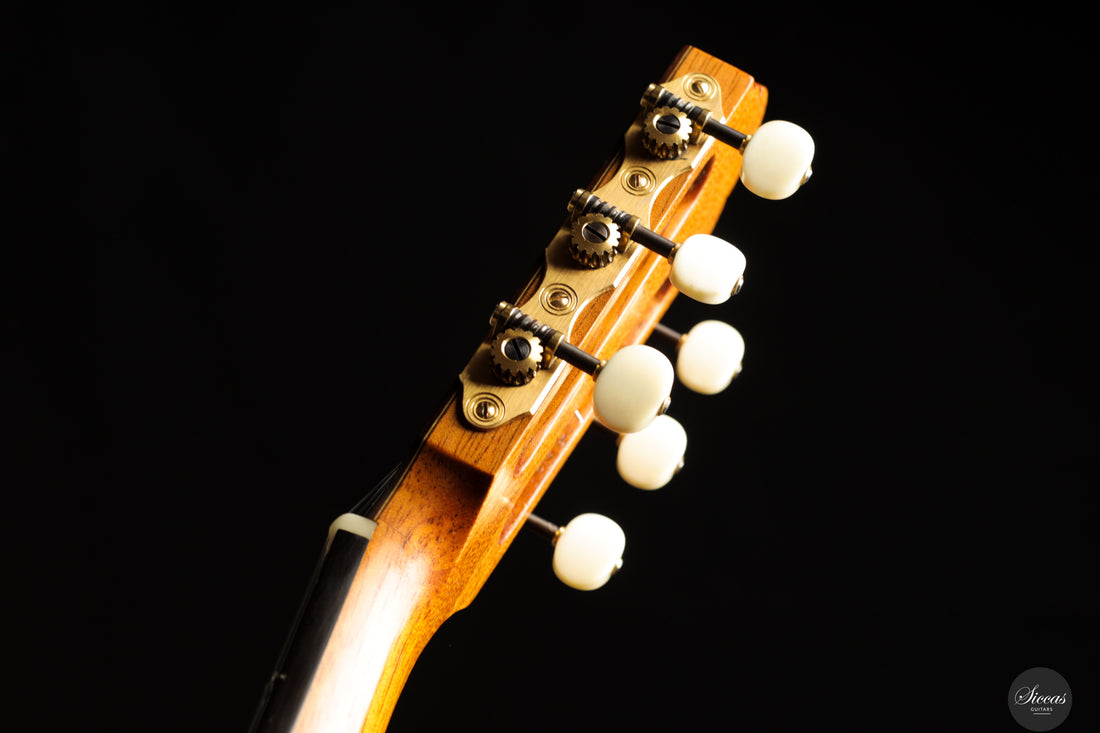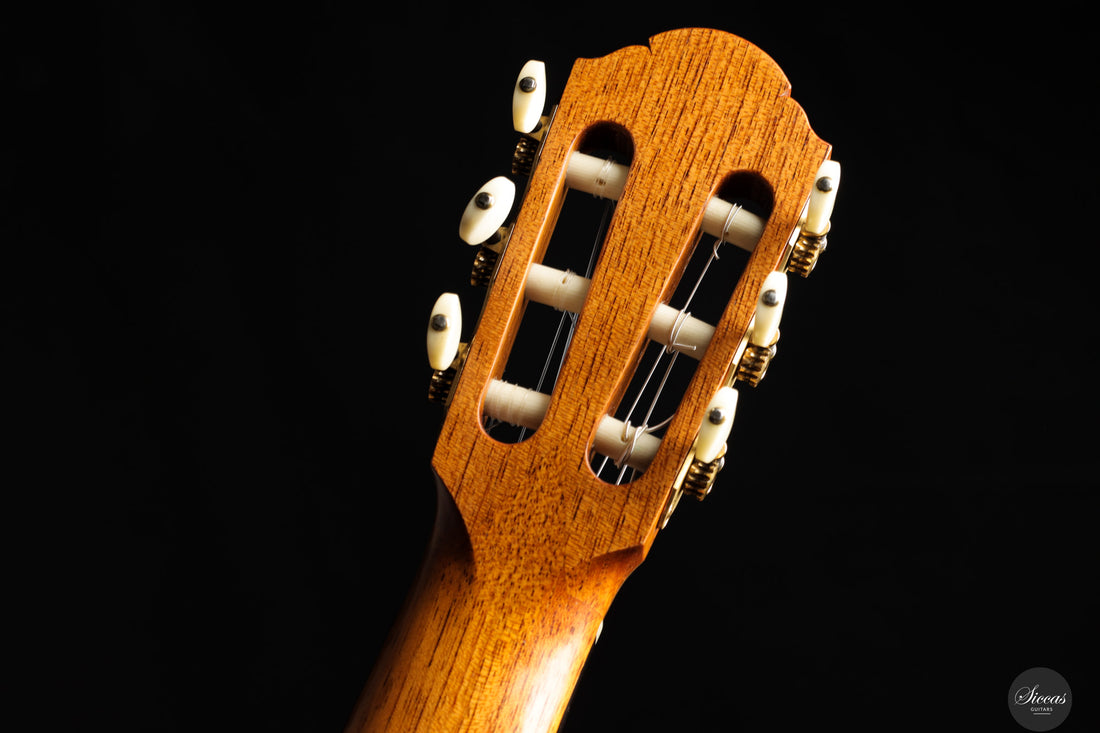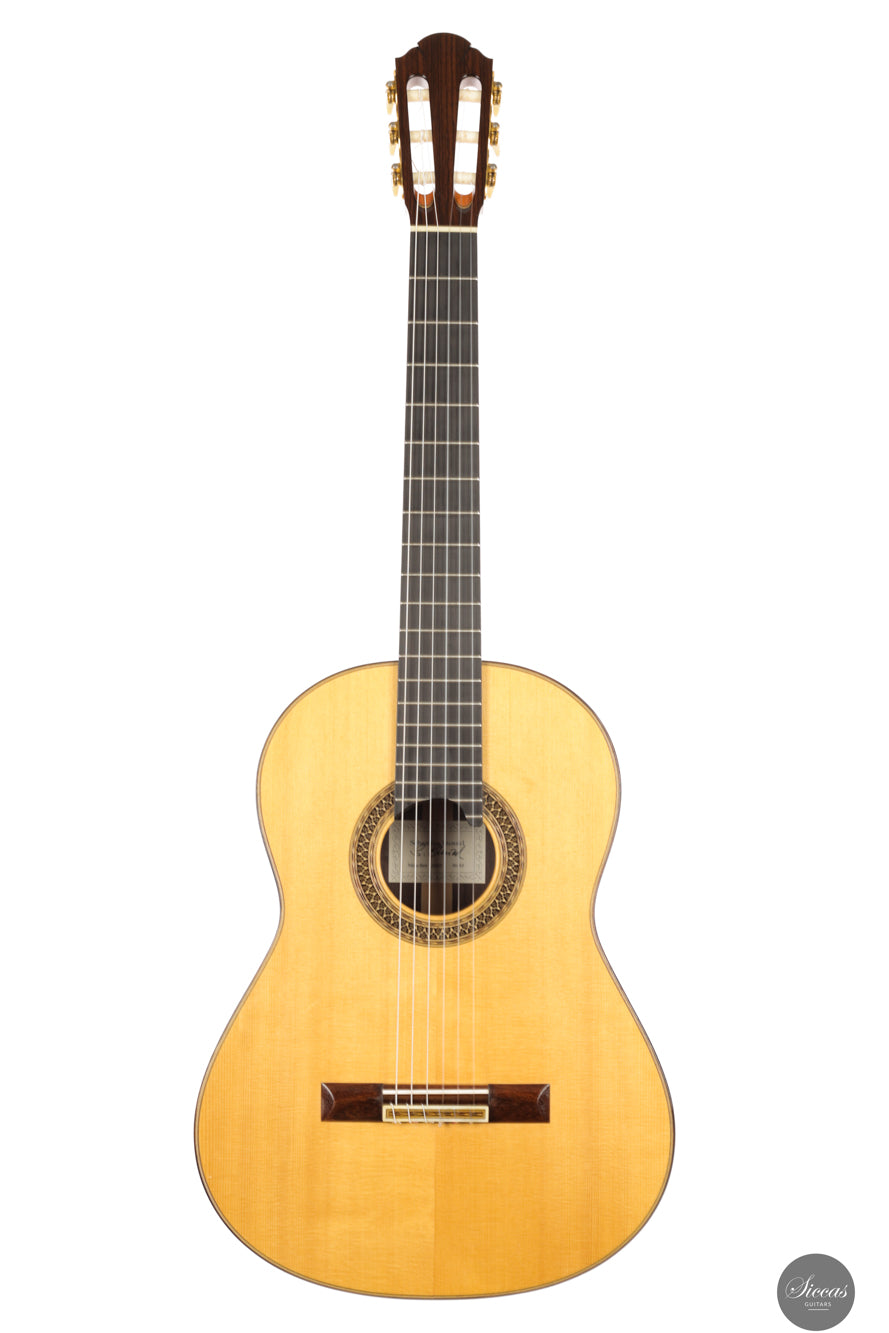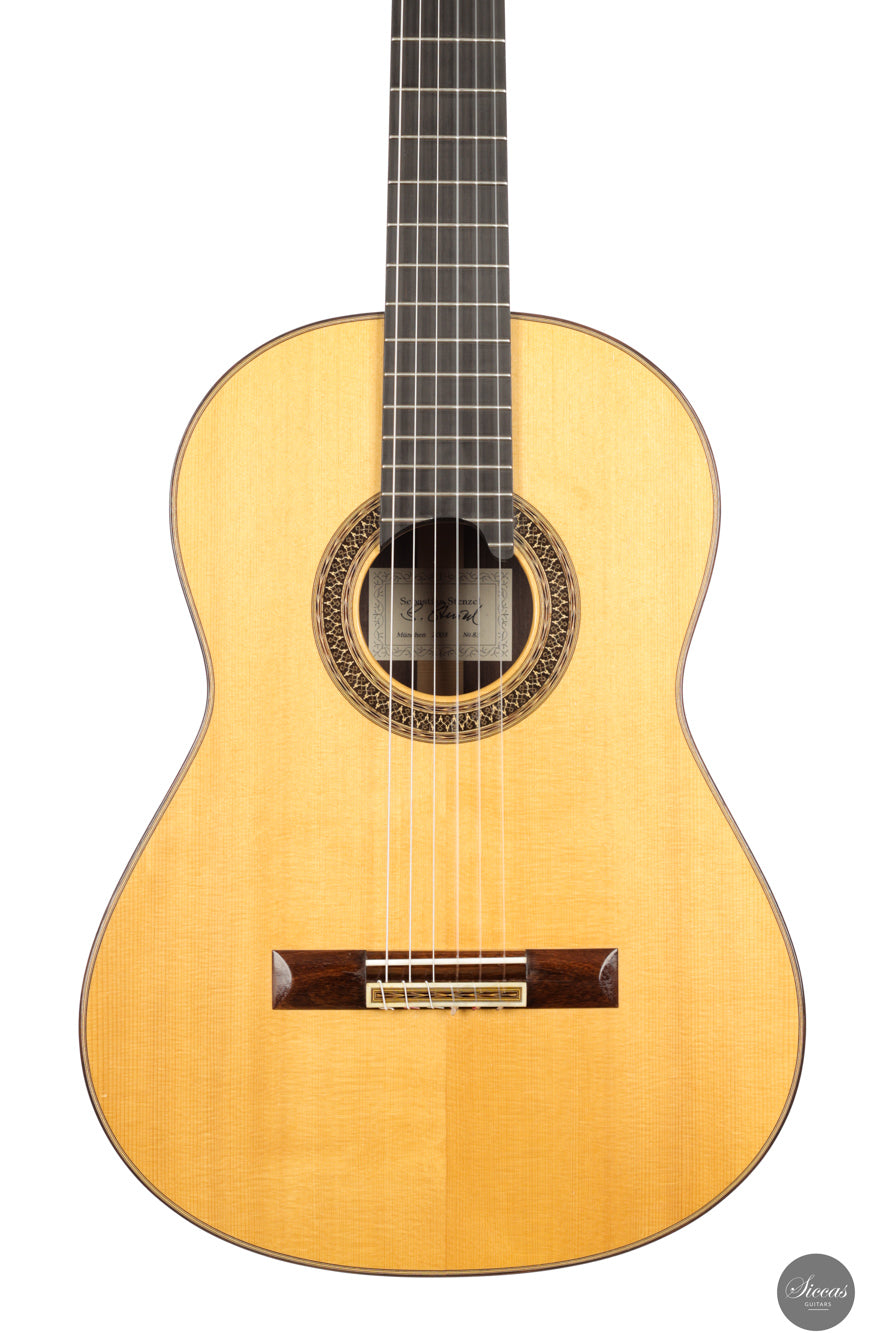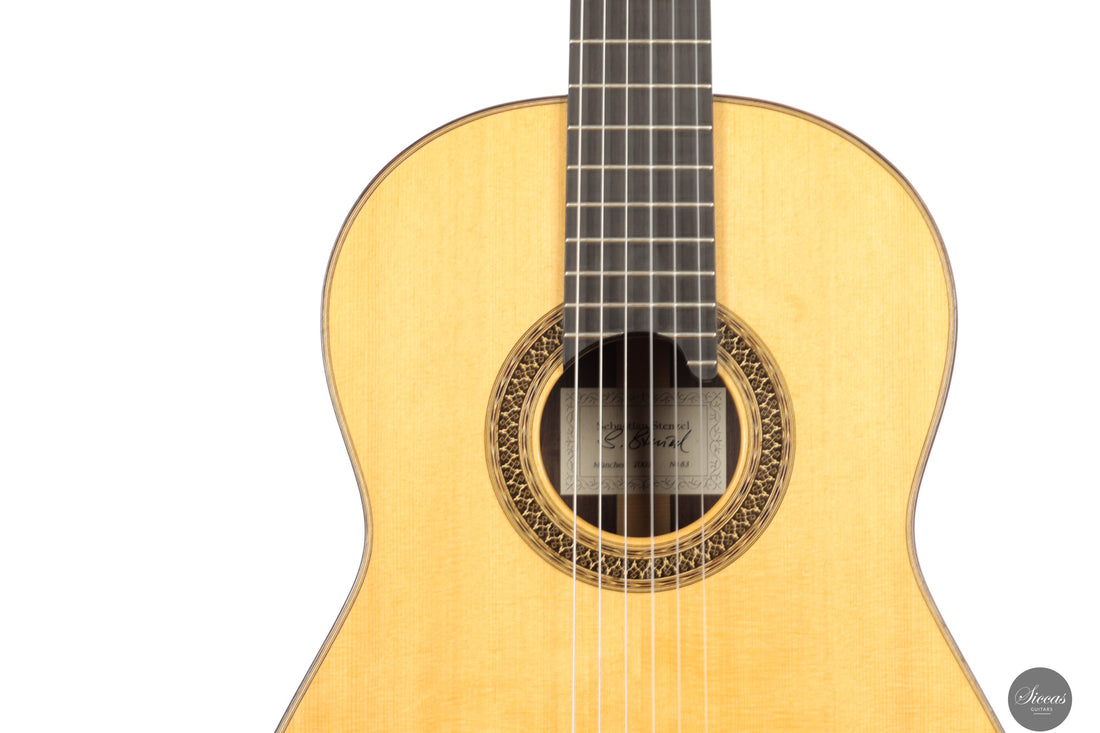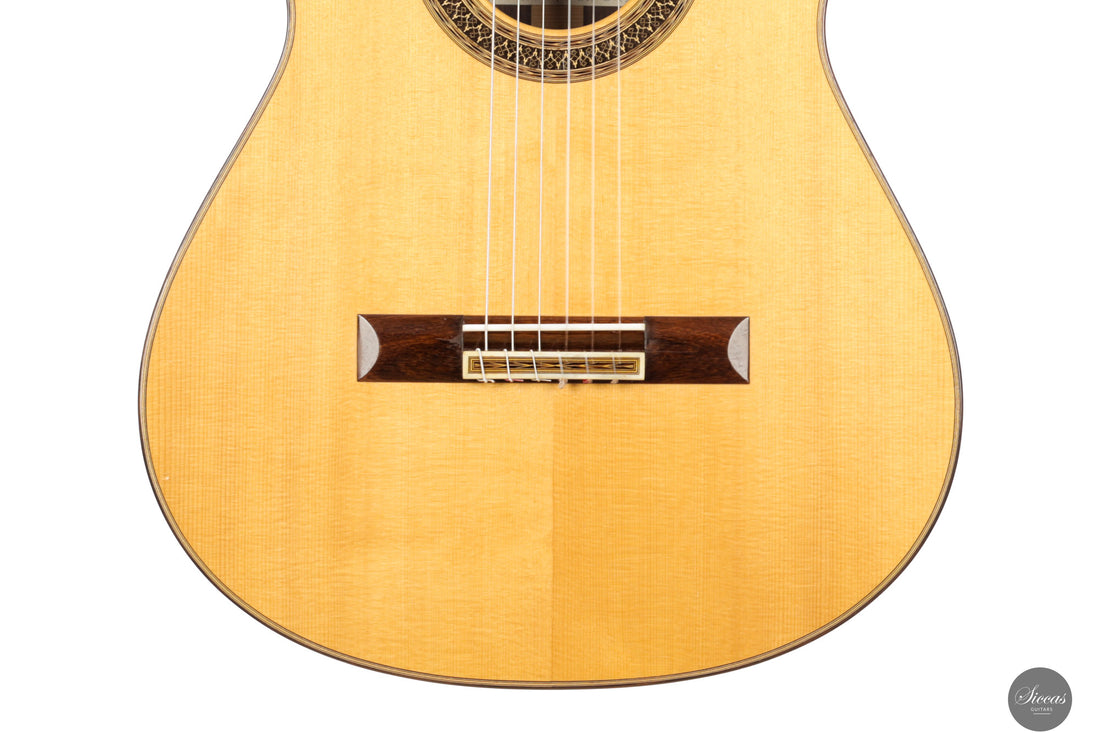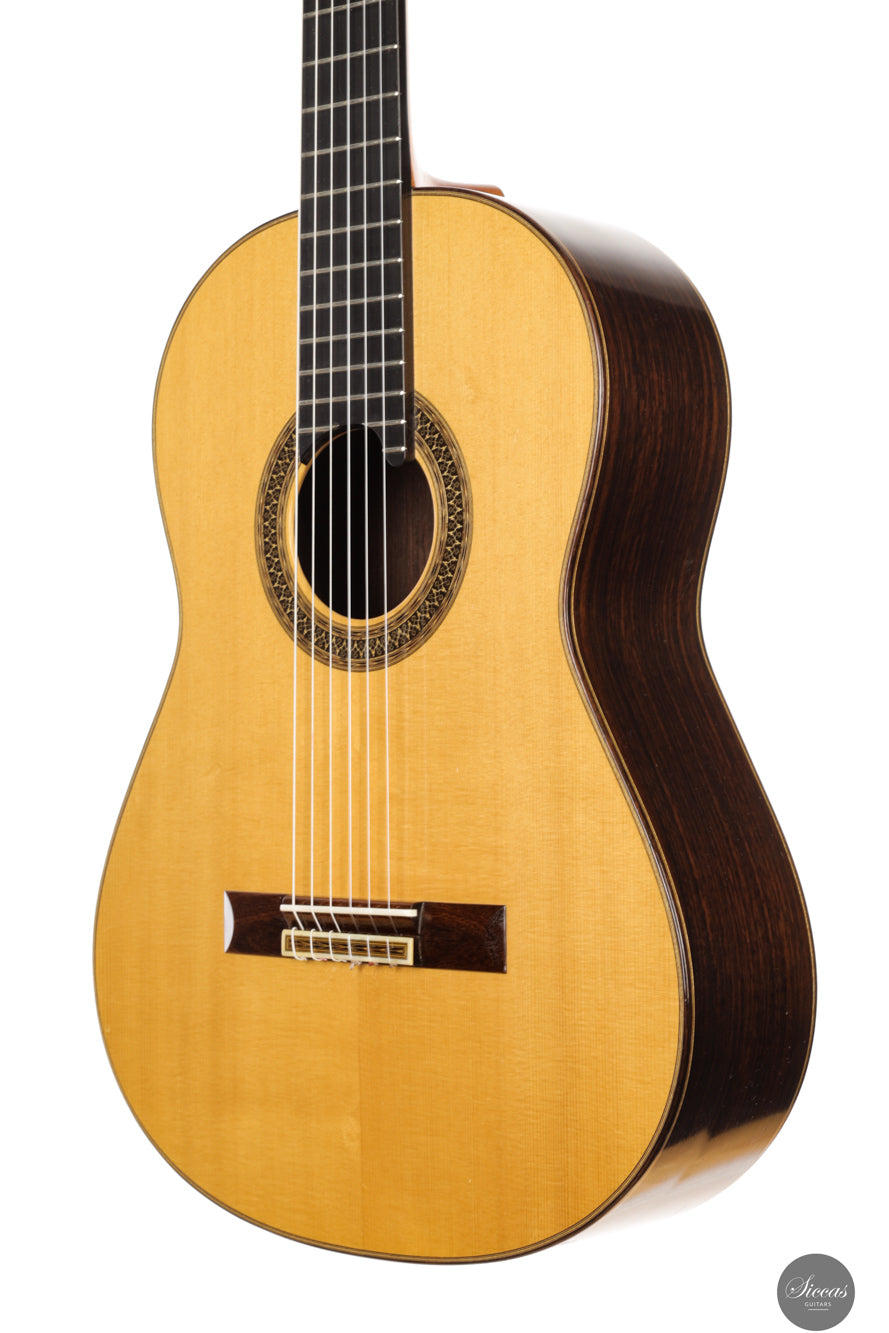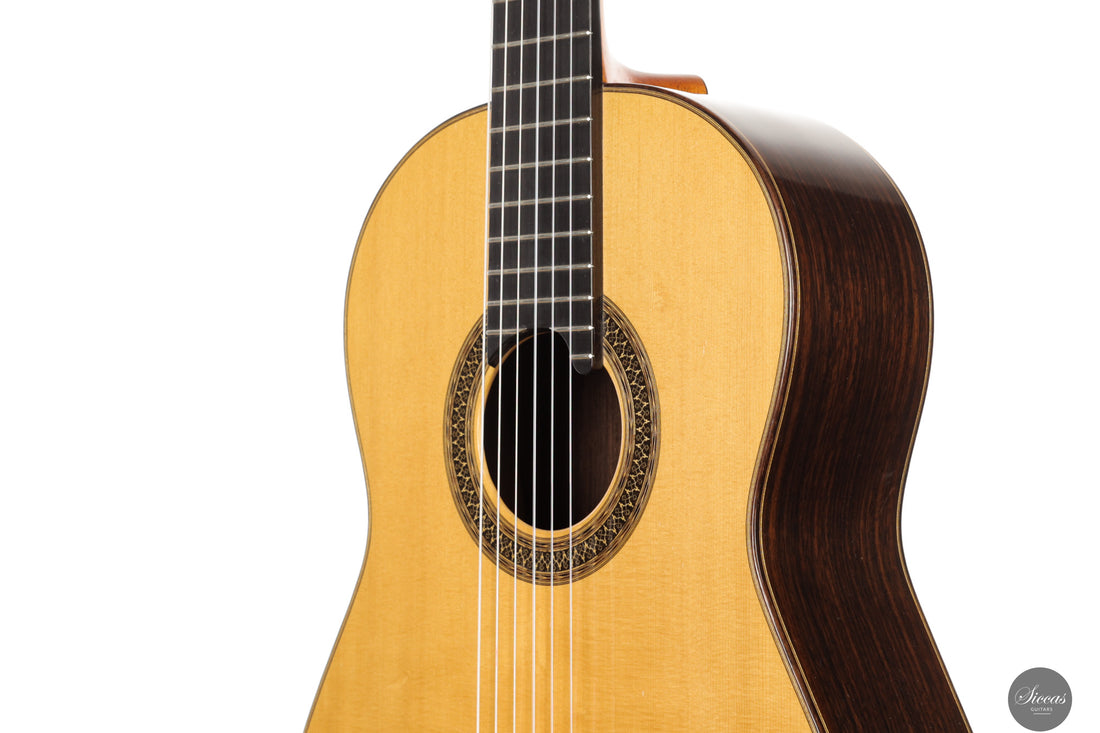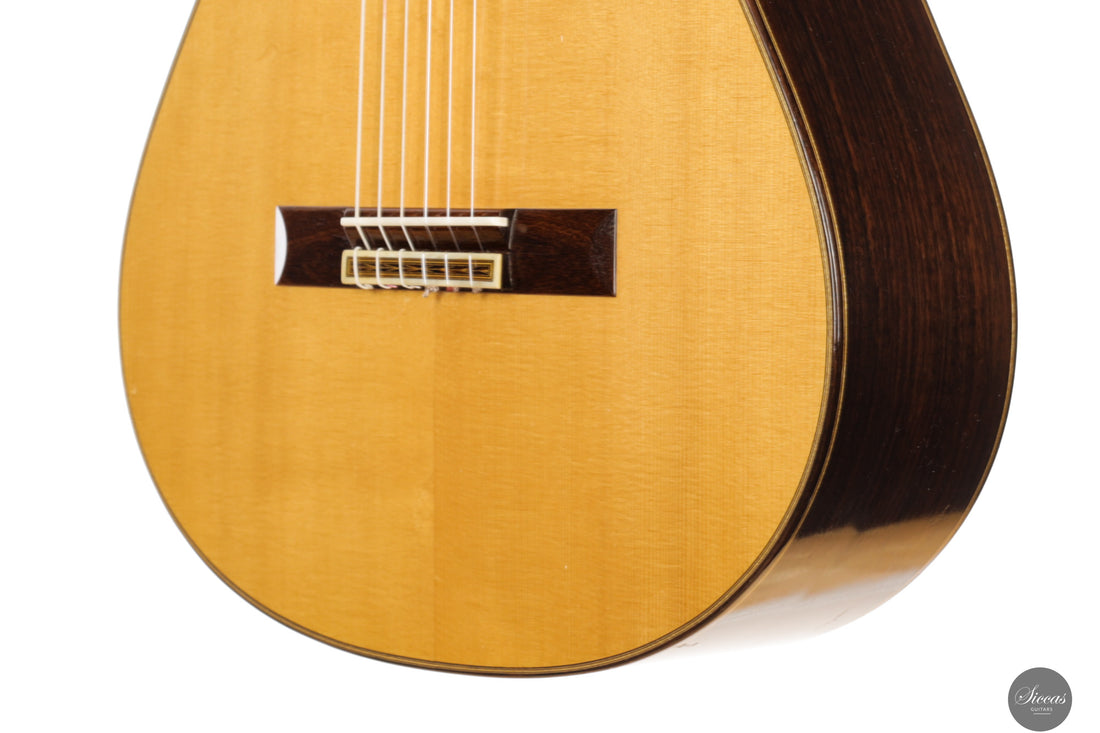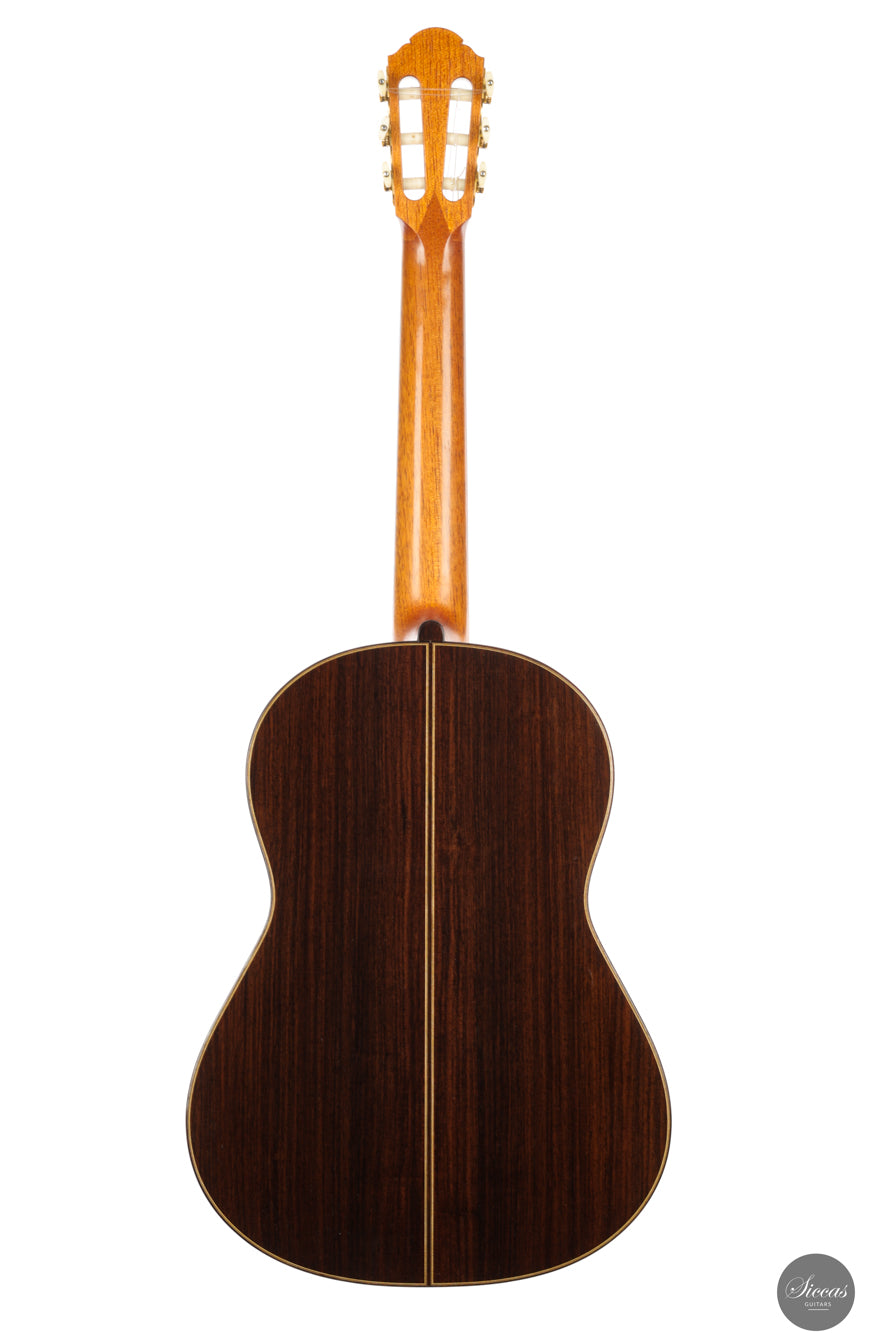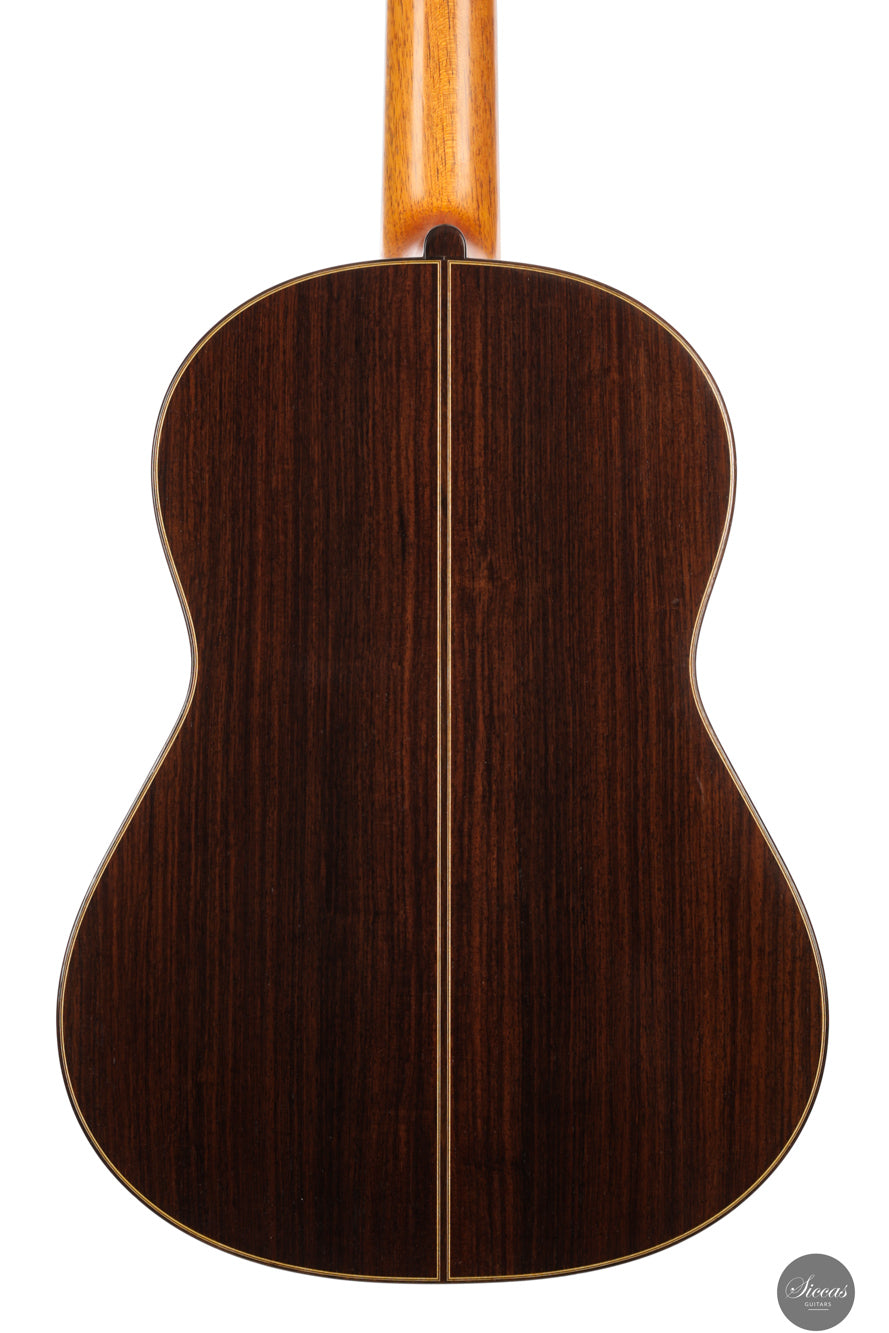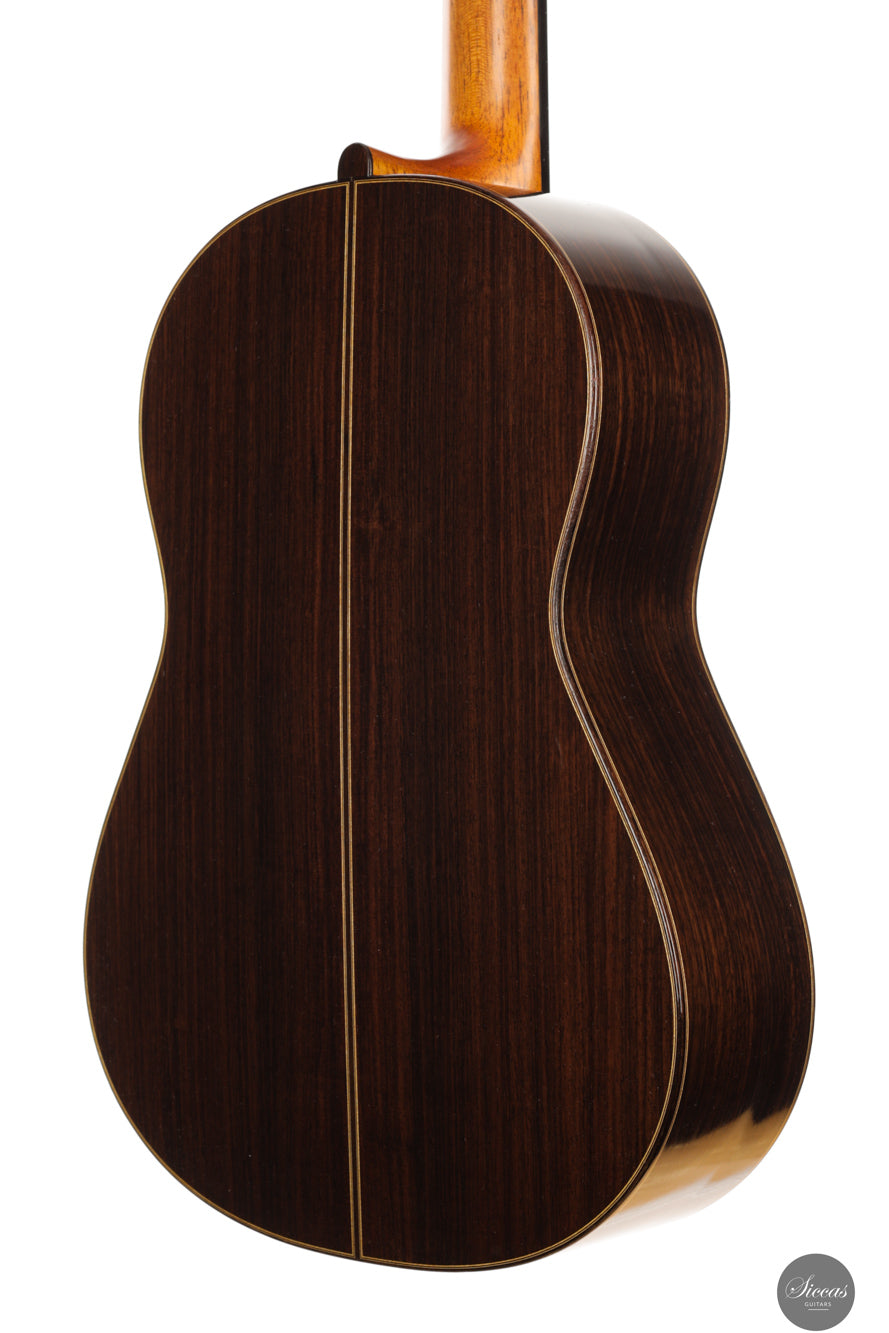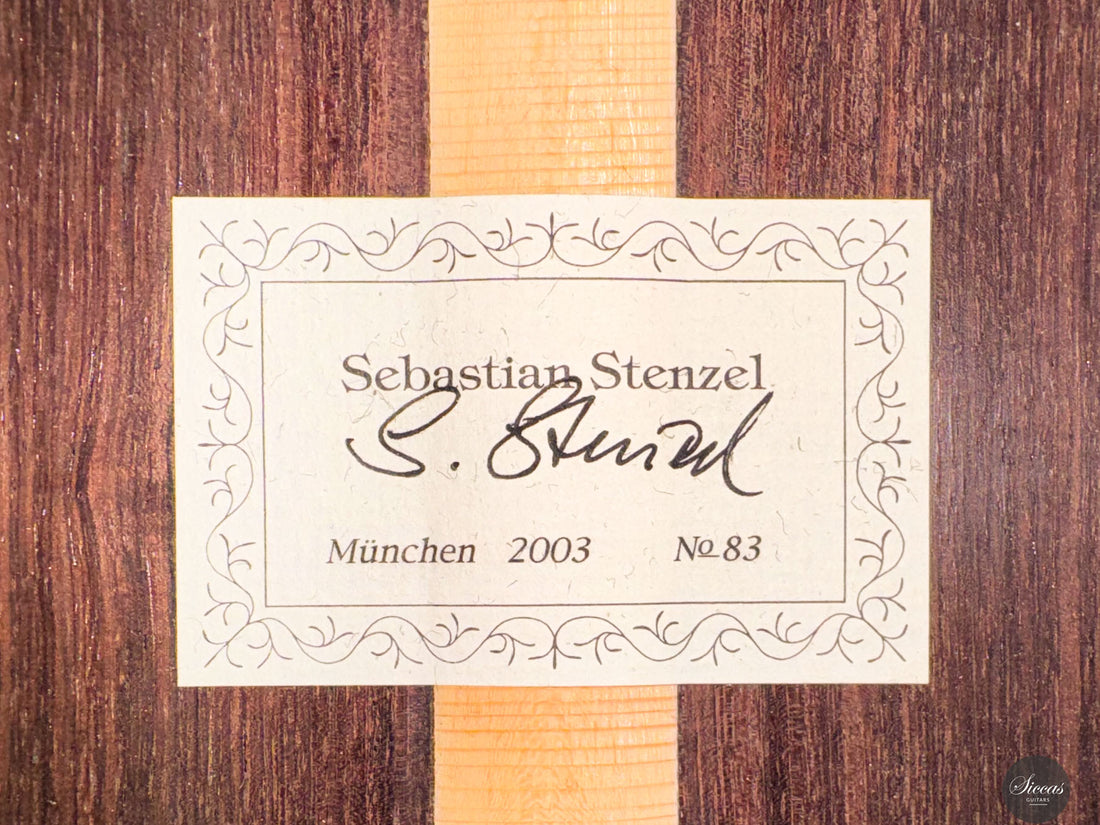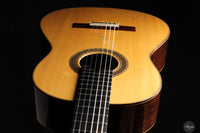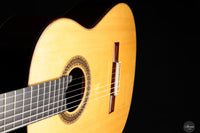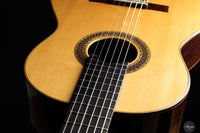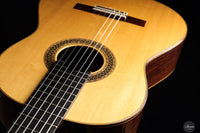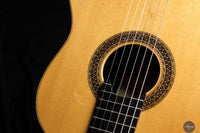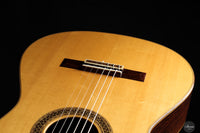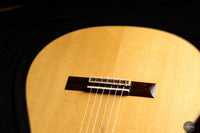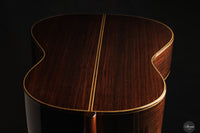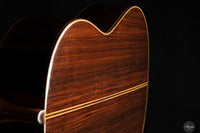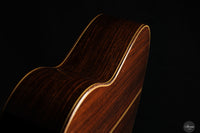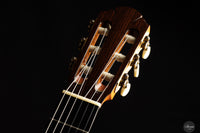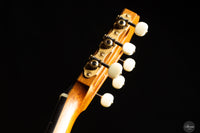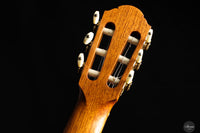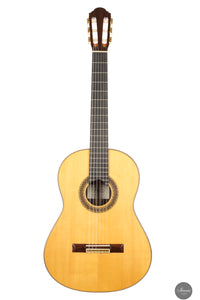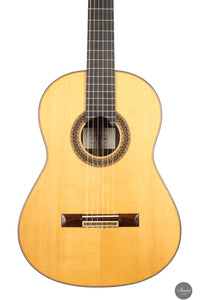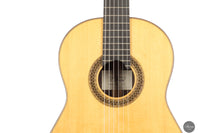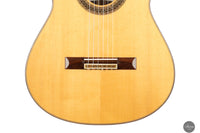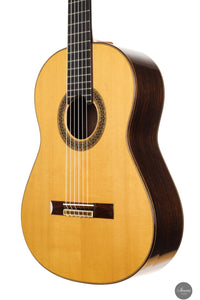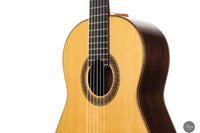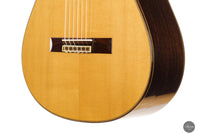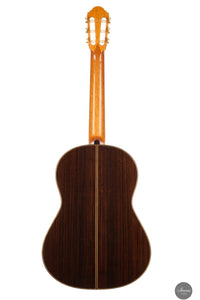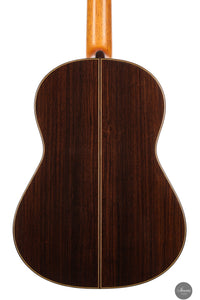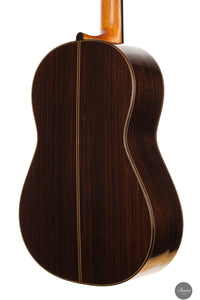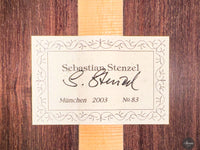Sebastian Stenzel - 2003 No. 83 64 cm
Sebastian Stenzel - 2003 No. 83 64 cm
Details
Details
Overview
Overview
Shipping important note
Shipping important note
Delivery times are typically reliable and most instruments arrive within the estimated timeframe.
Should any unexpected delay occur, our team will keep you informed and provide support at every step. For all shipping details and exceptions, please see our Shipping Policy.
Details about GPSR
Details about GPSR
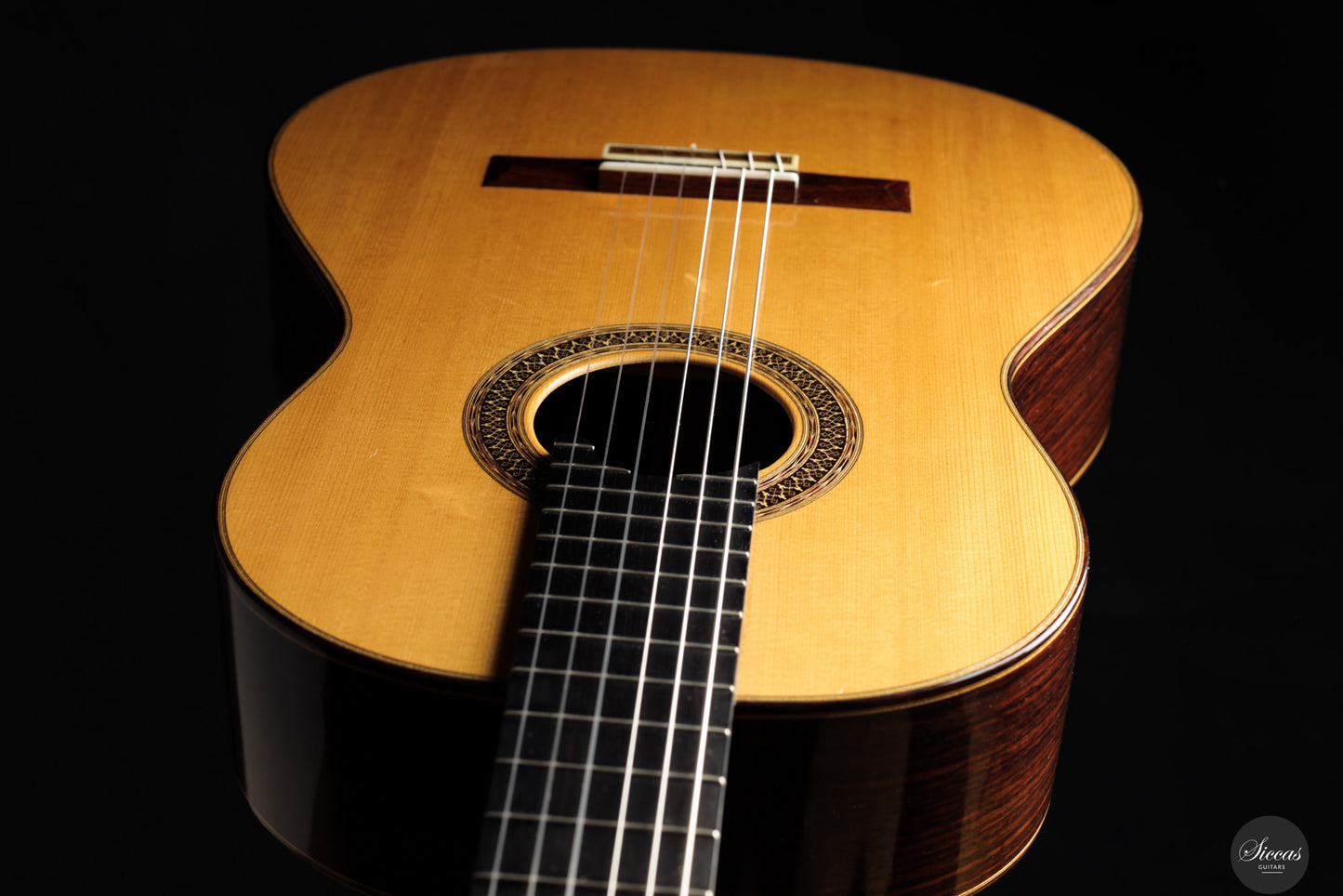
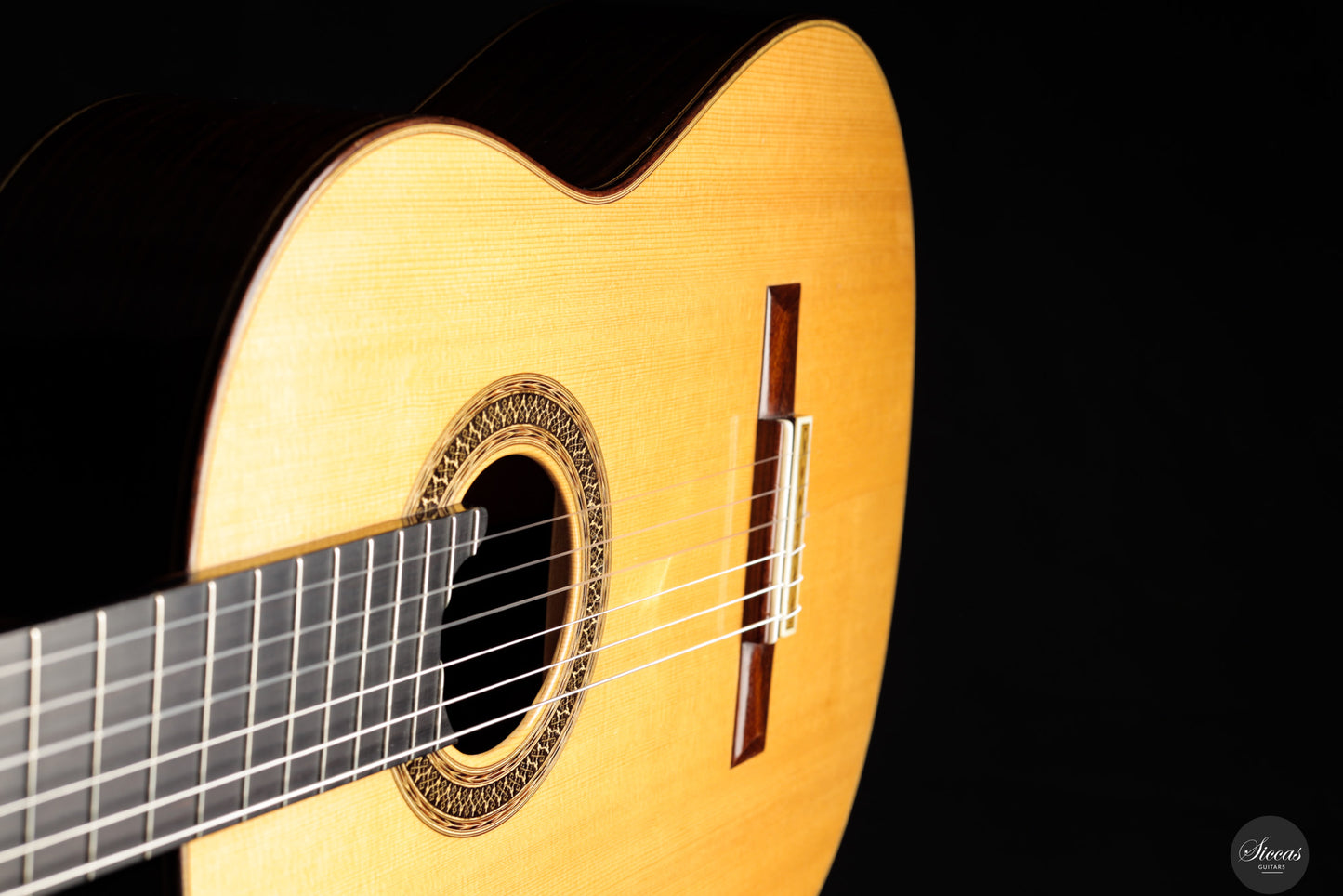
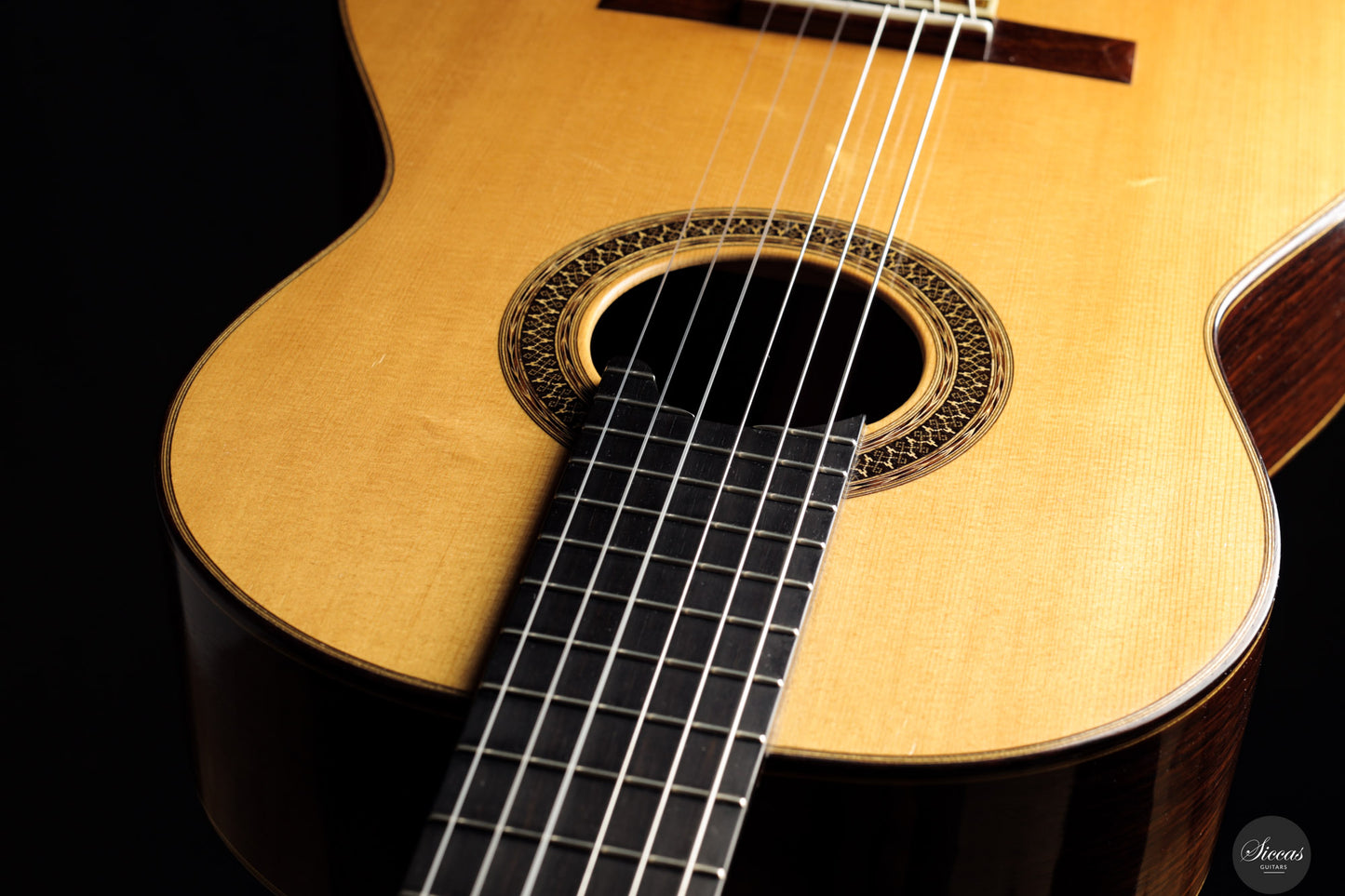
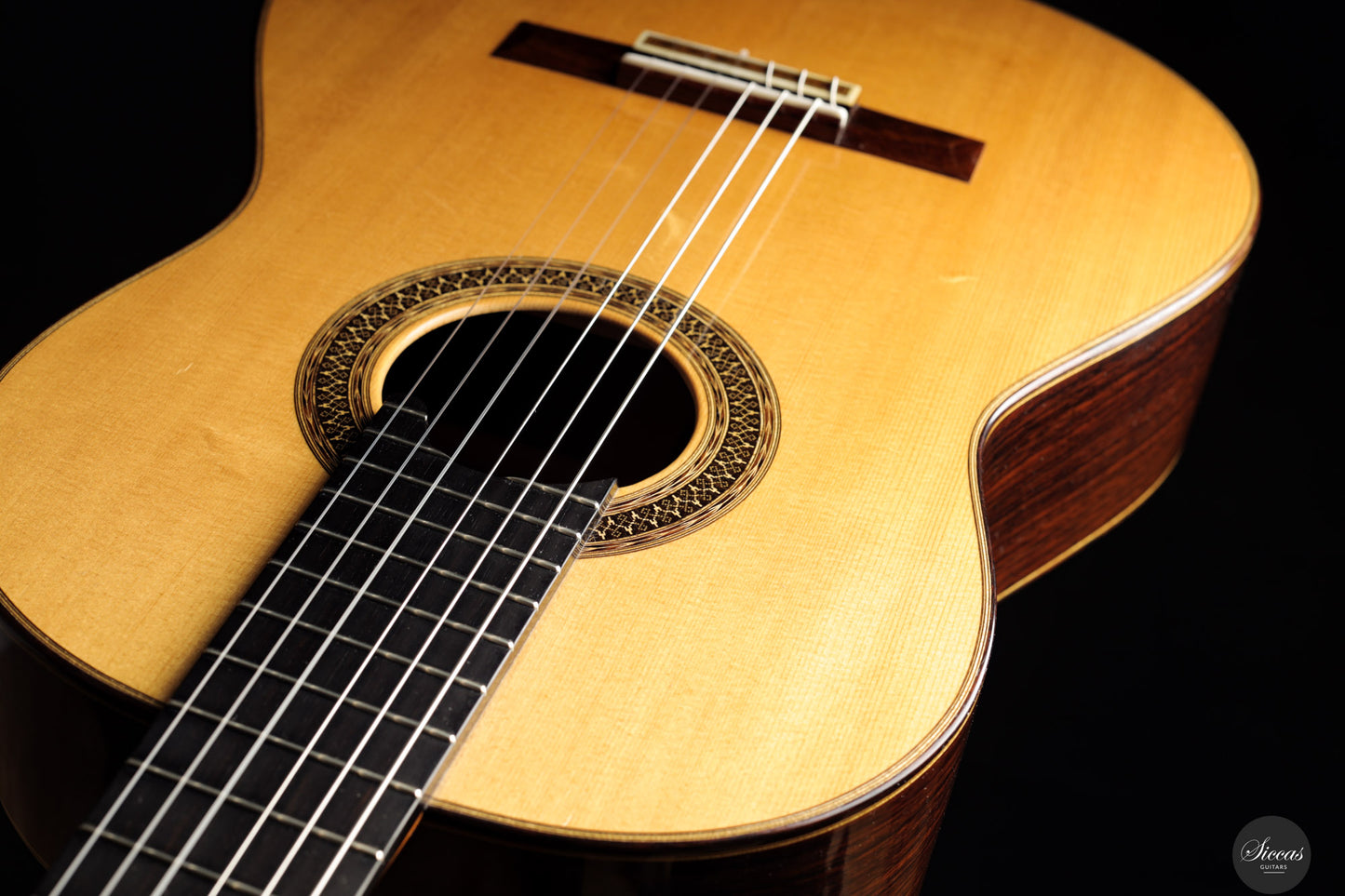
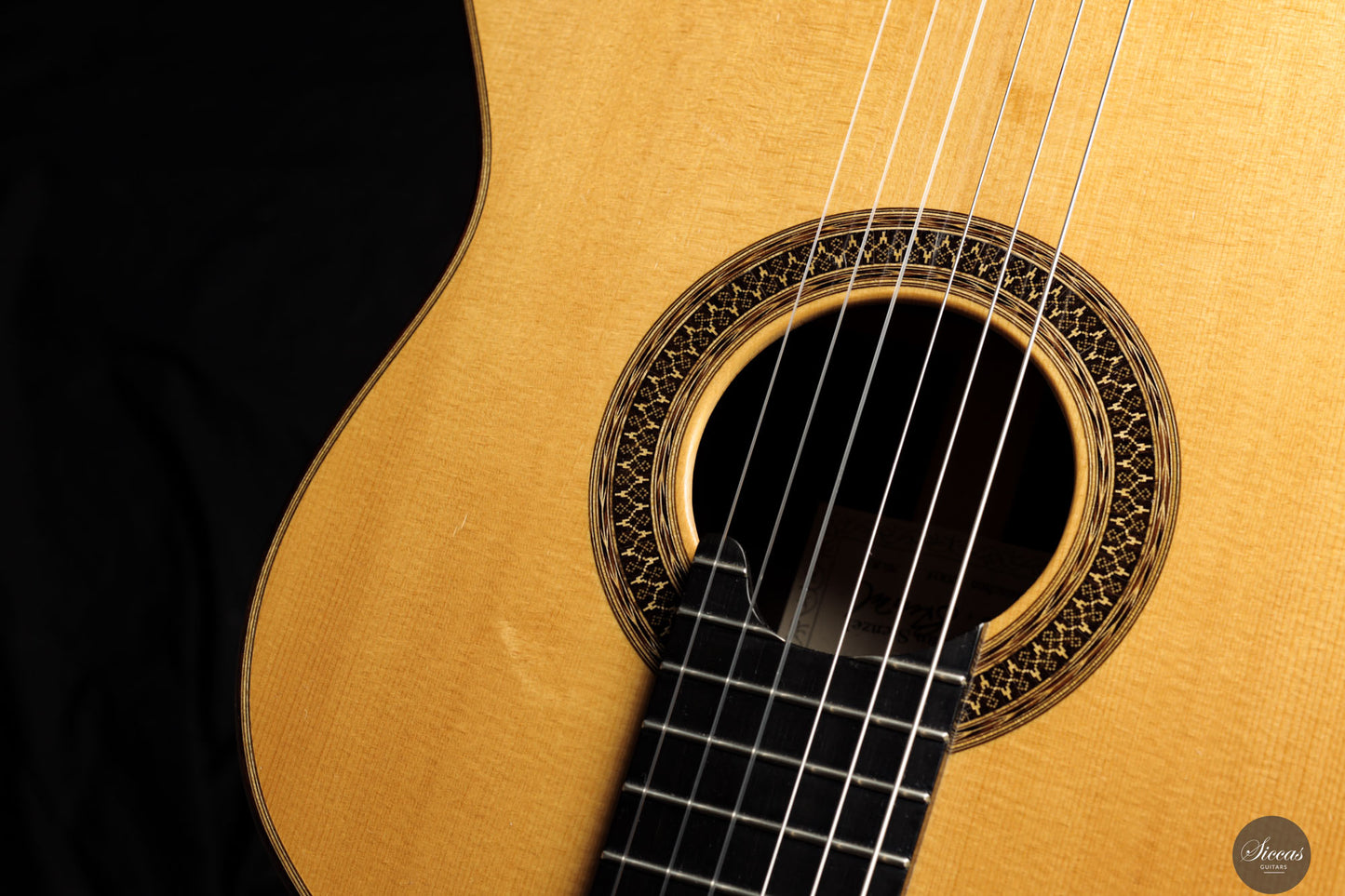
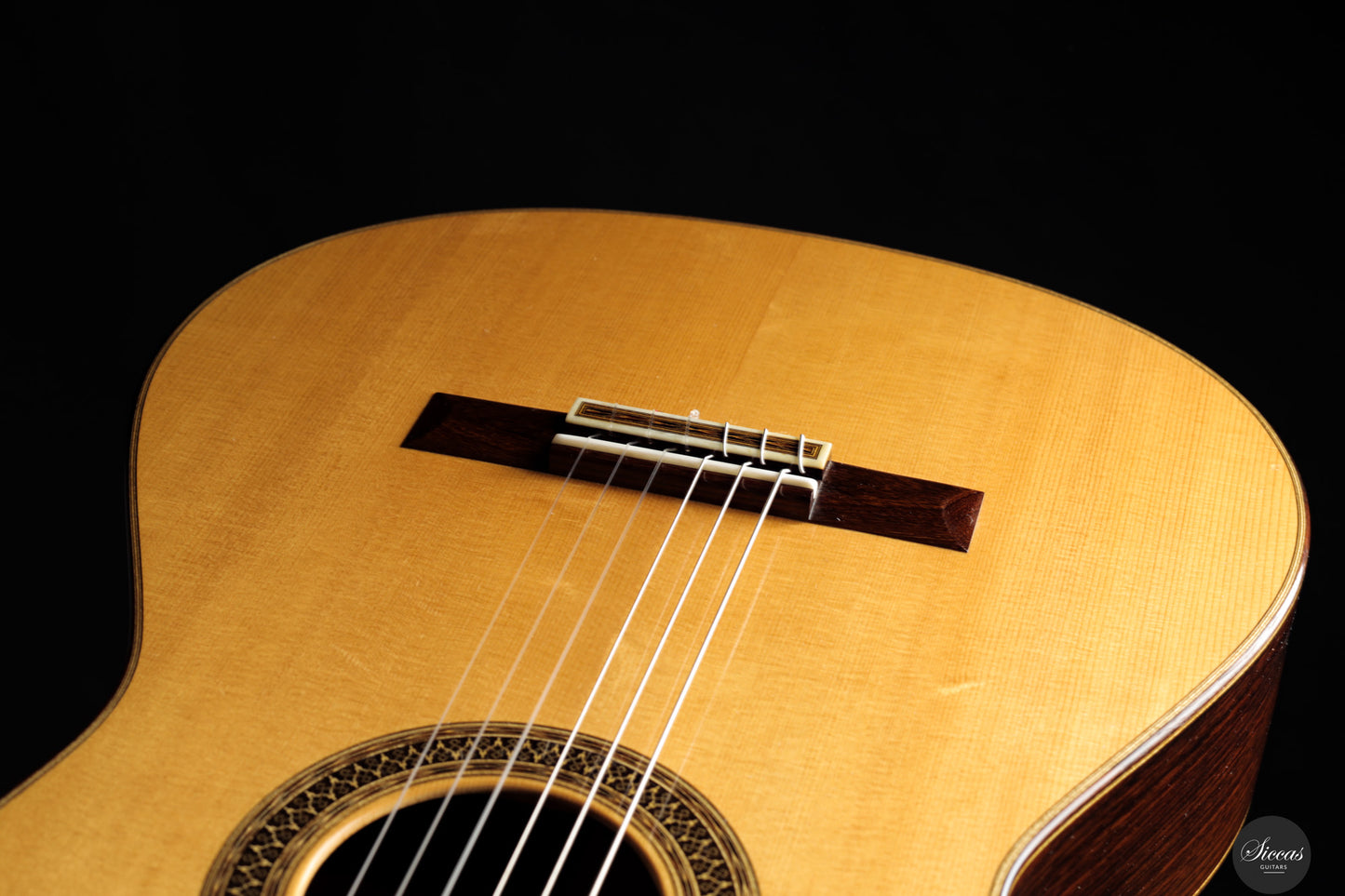
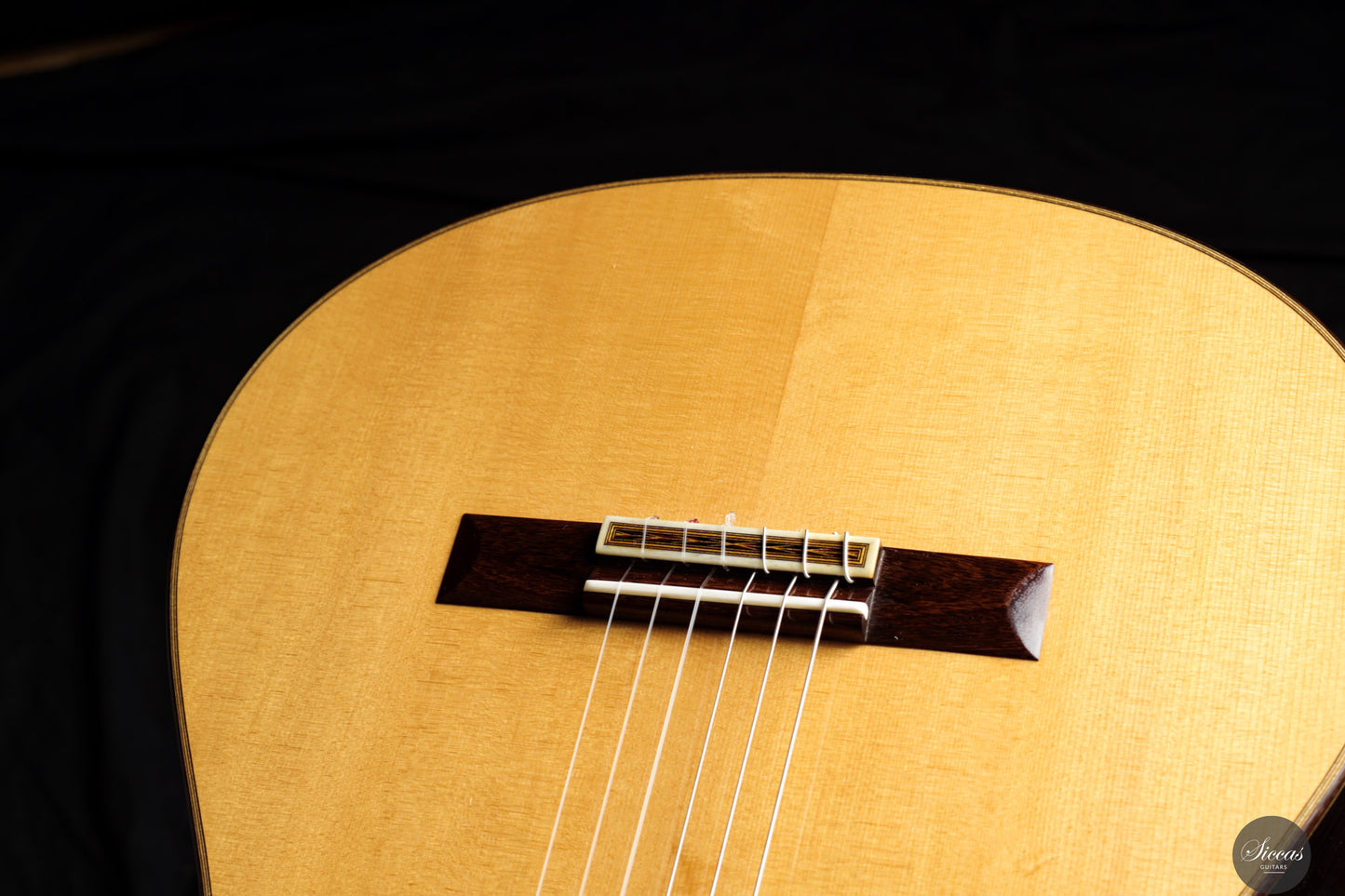
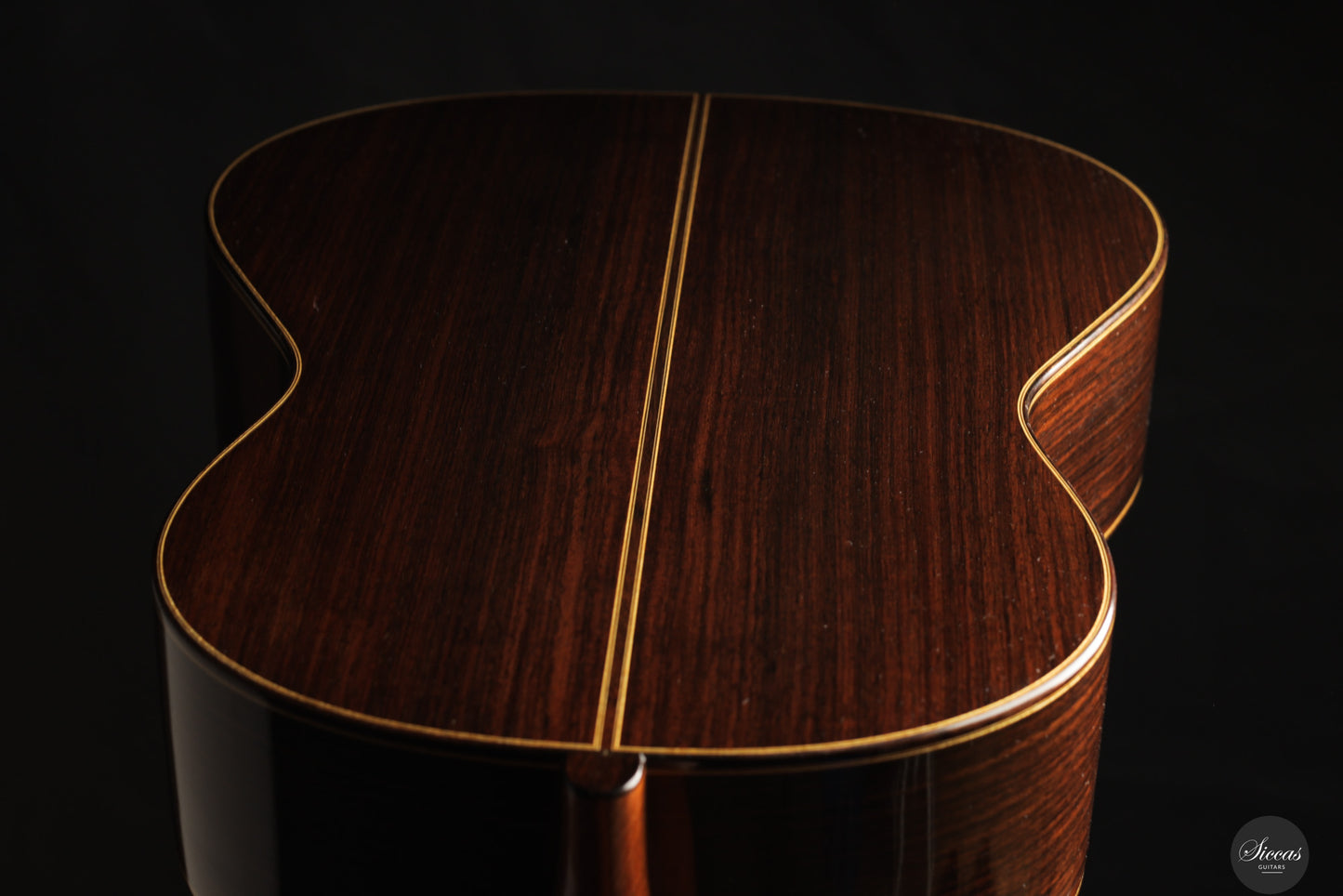
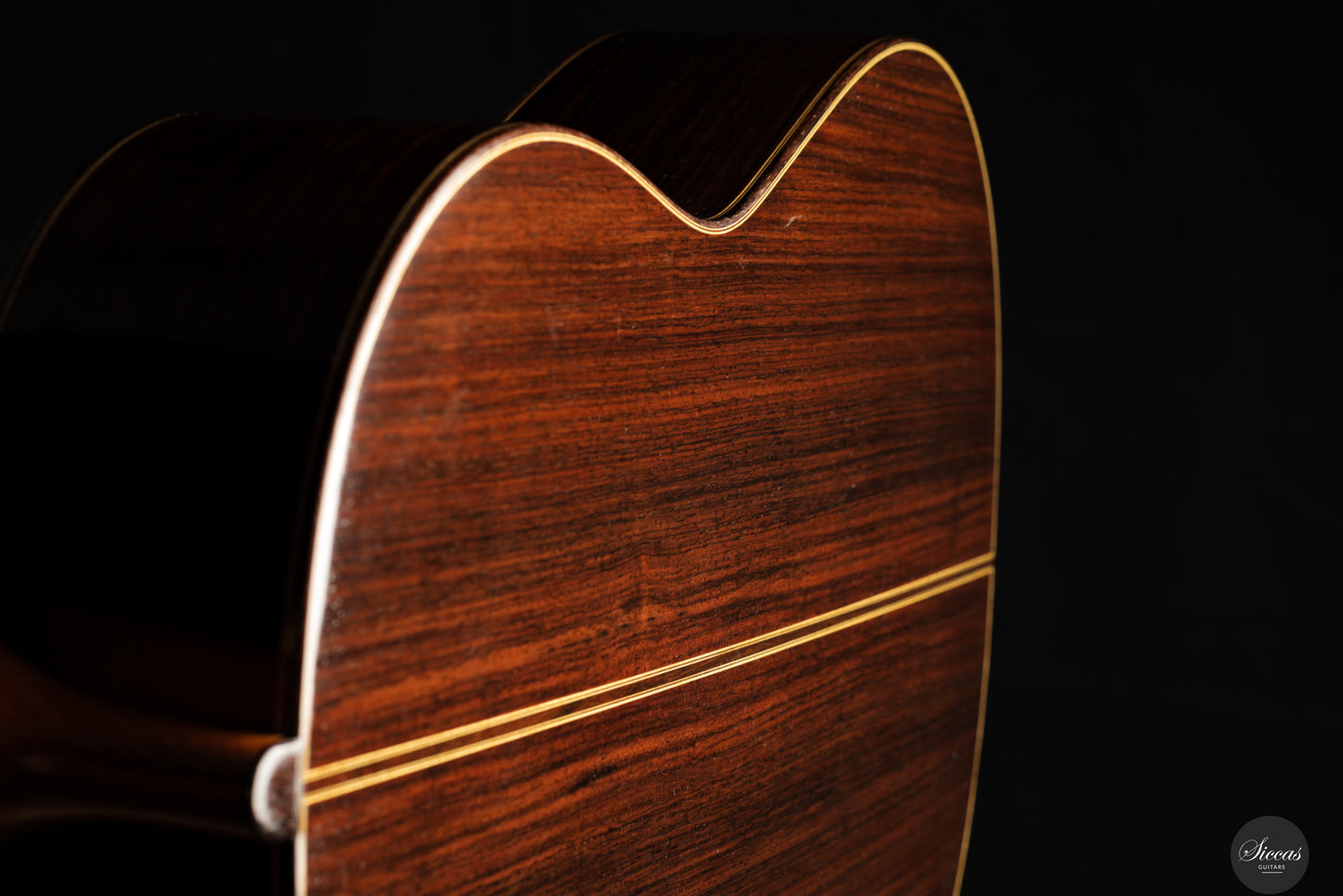
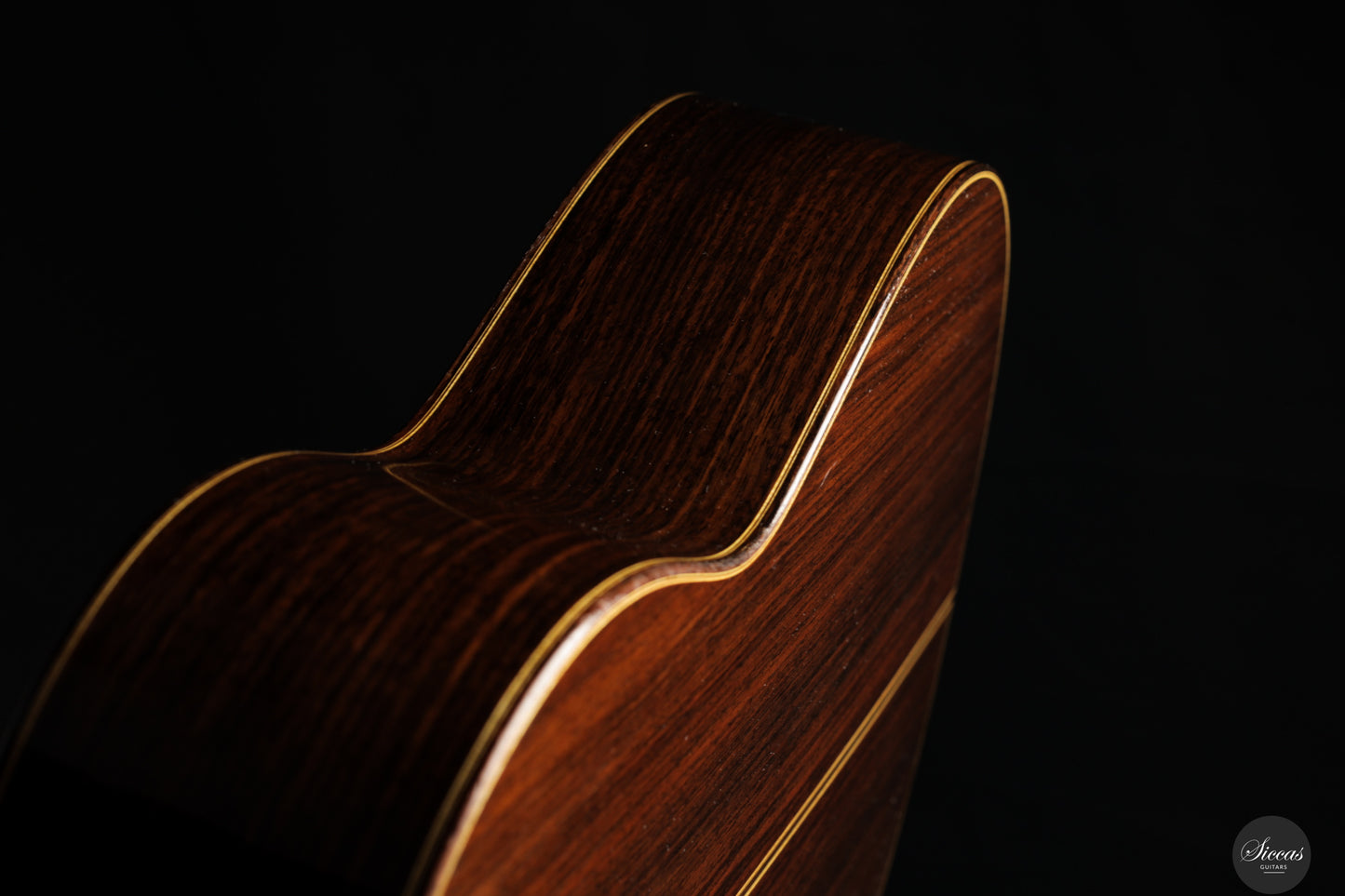
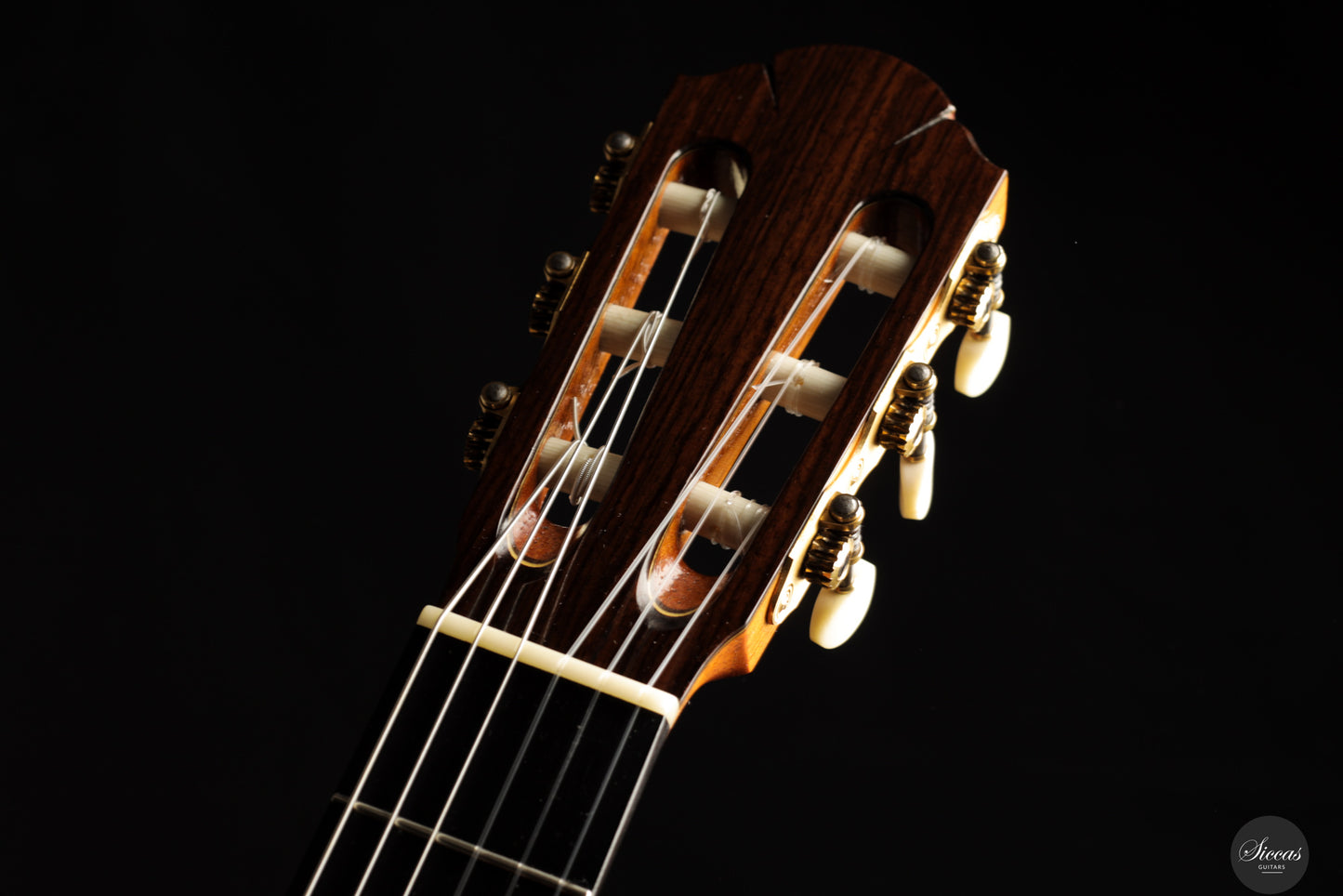
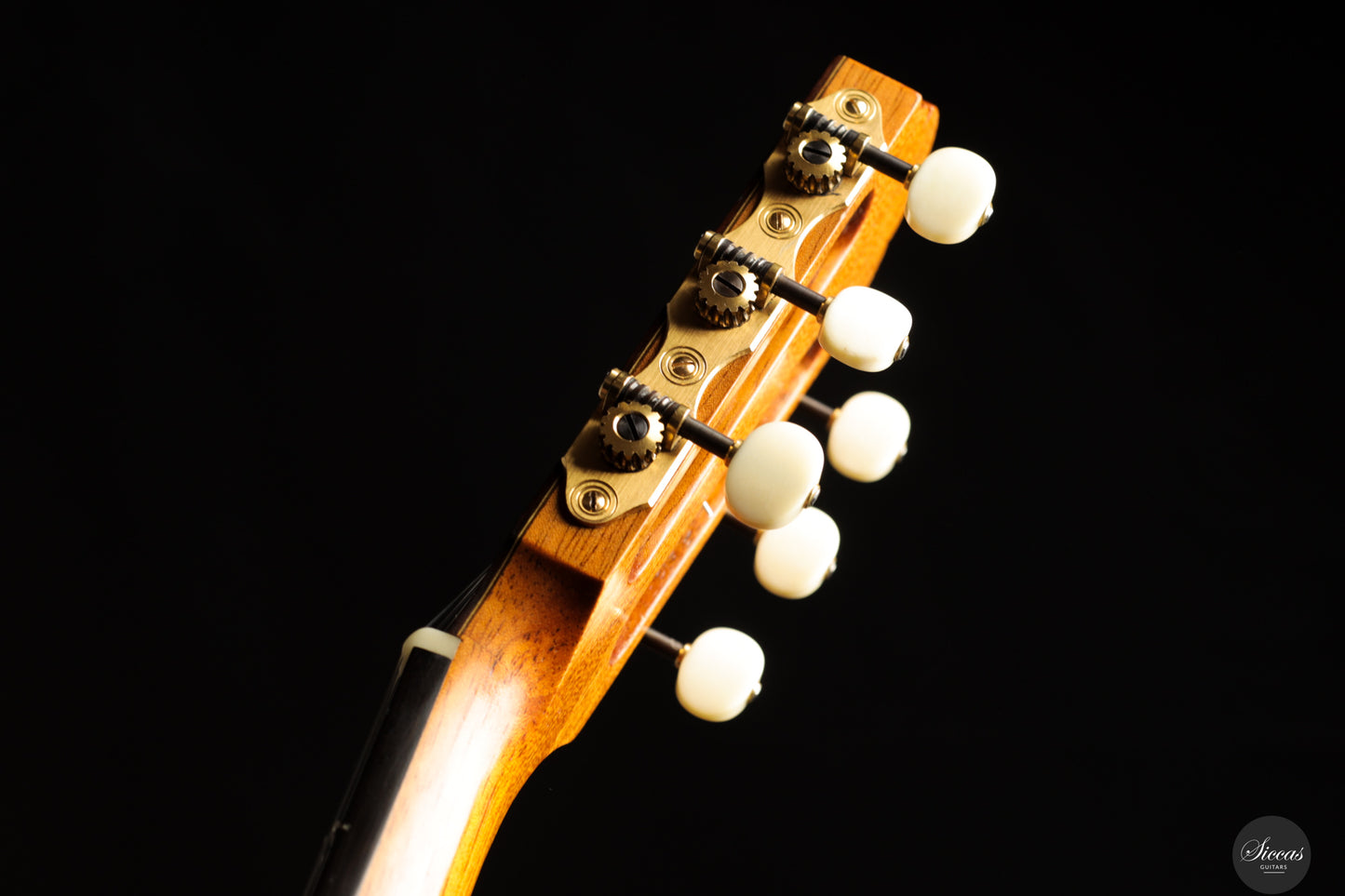
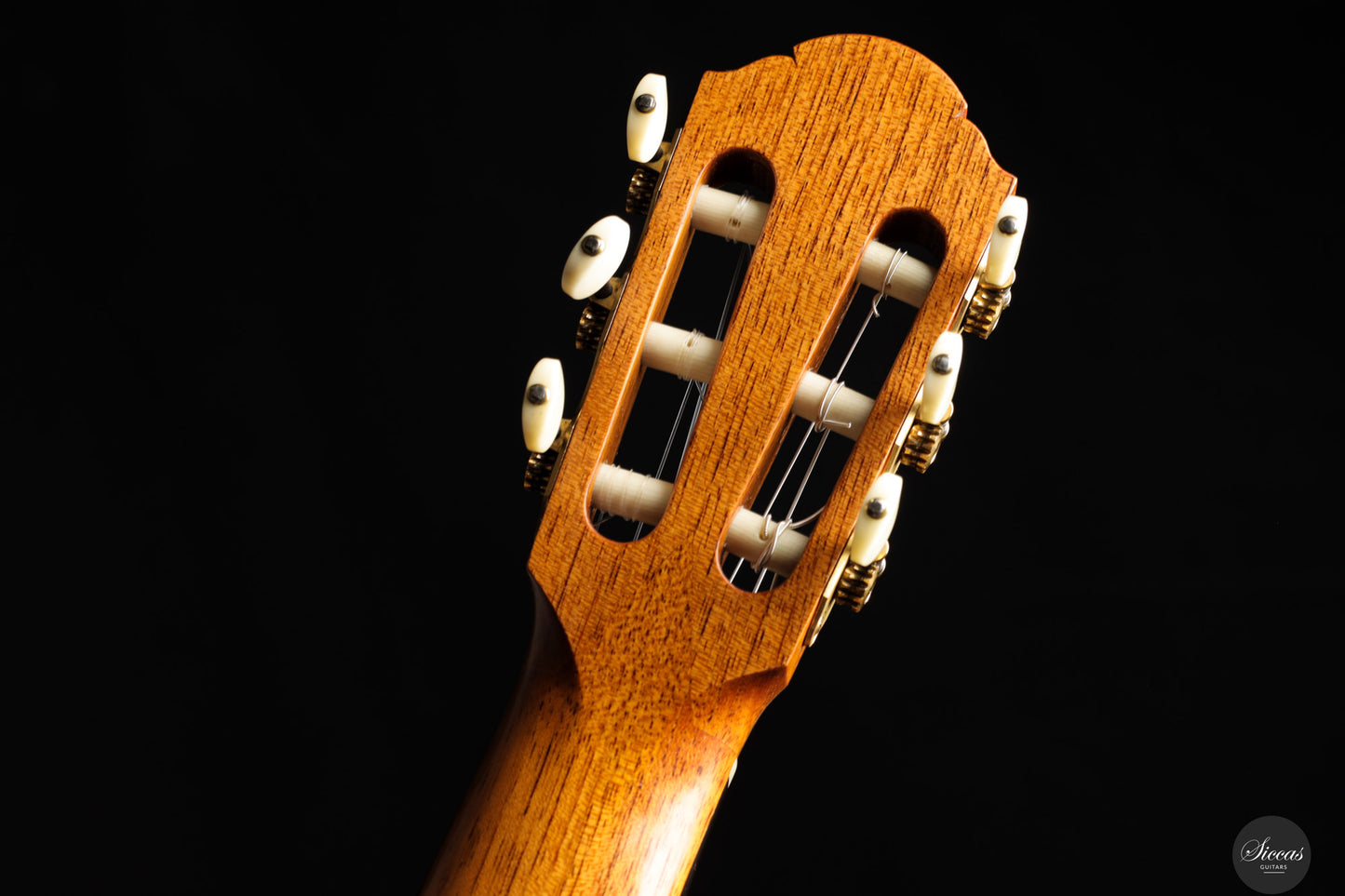
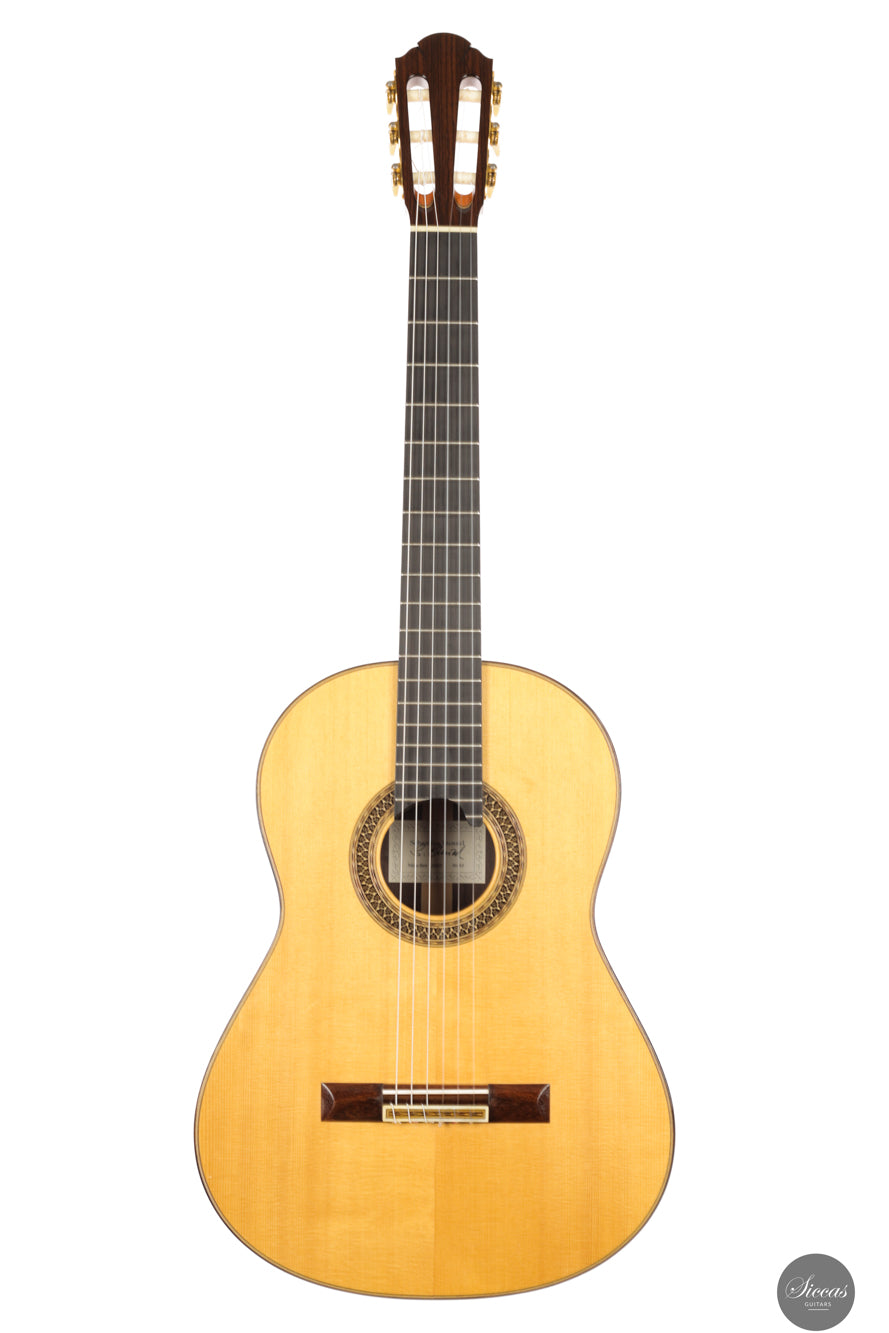
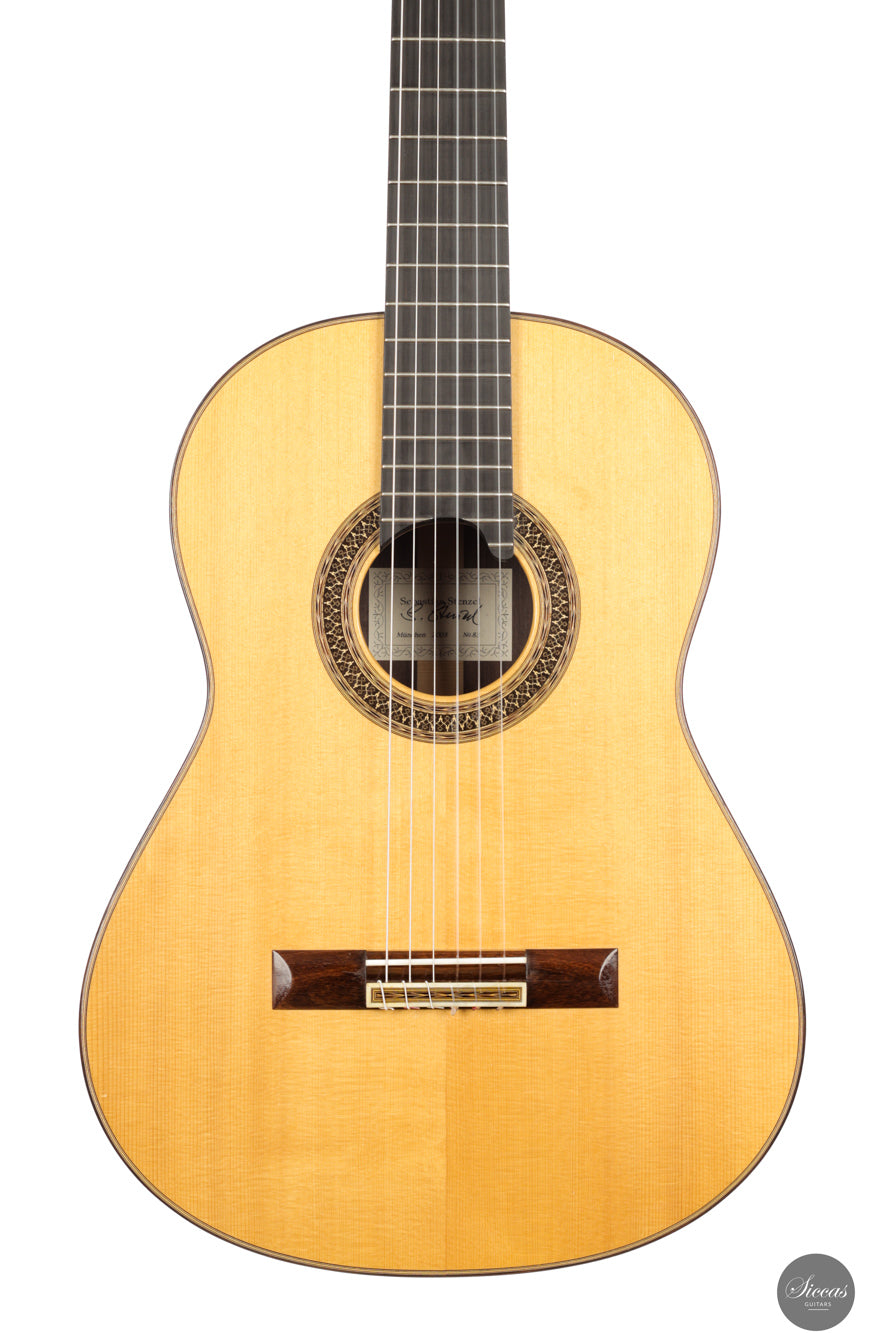
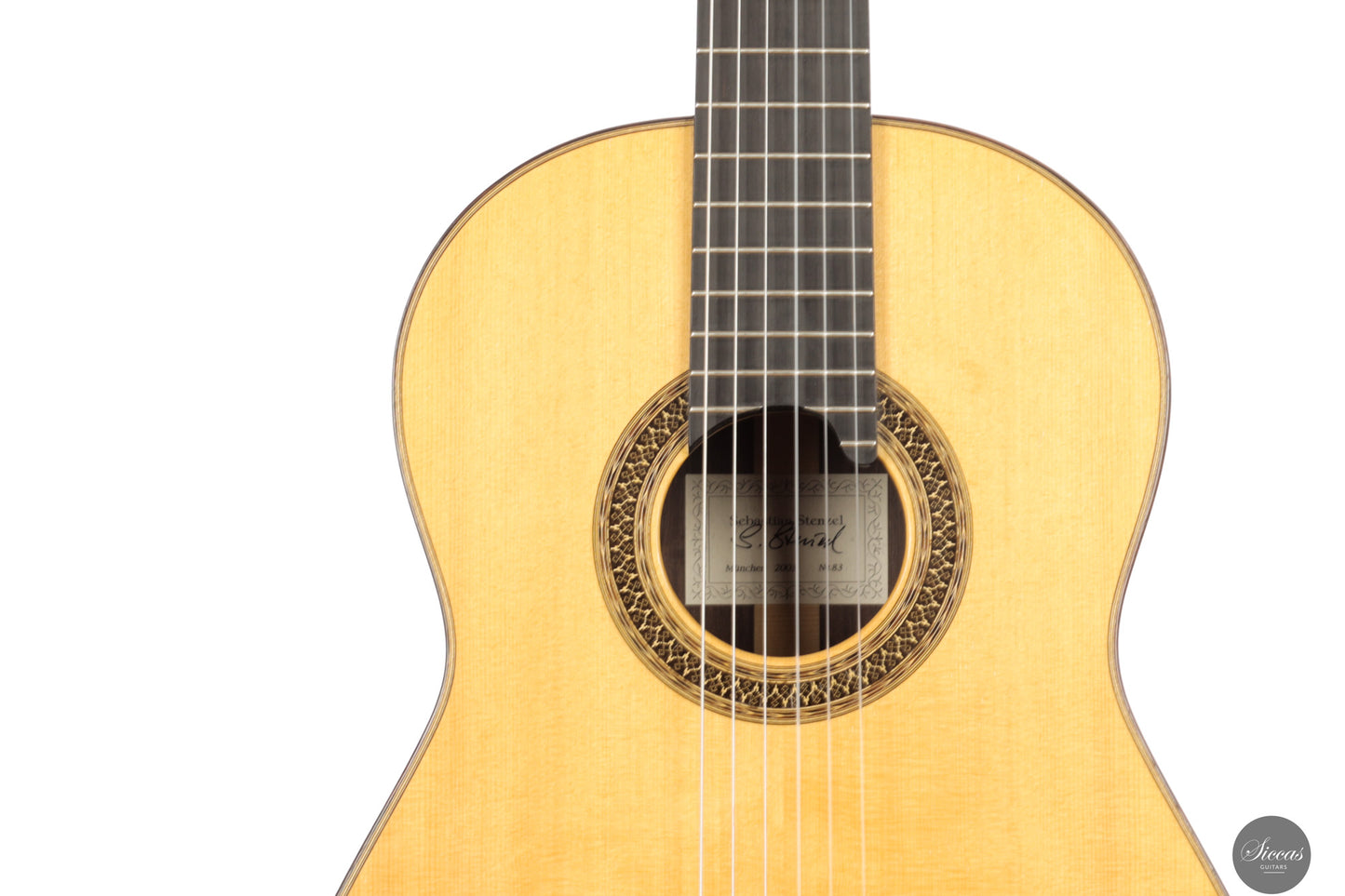
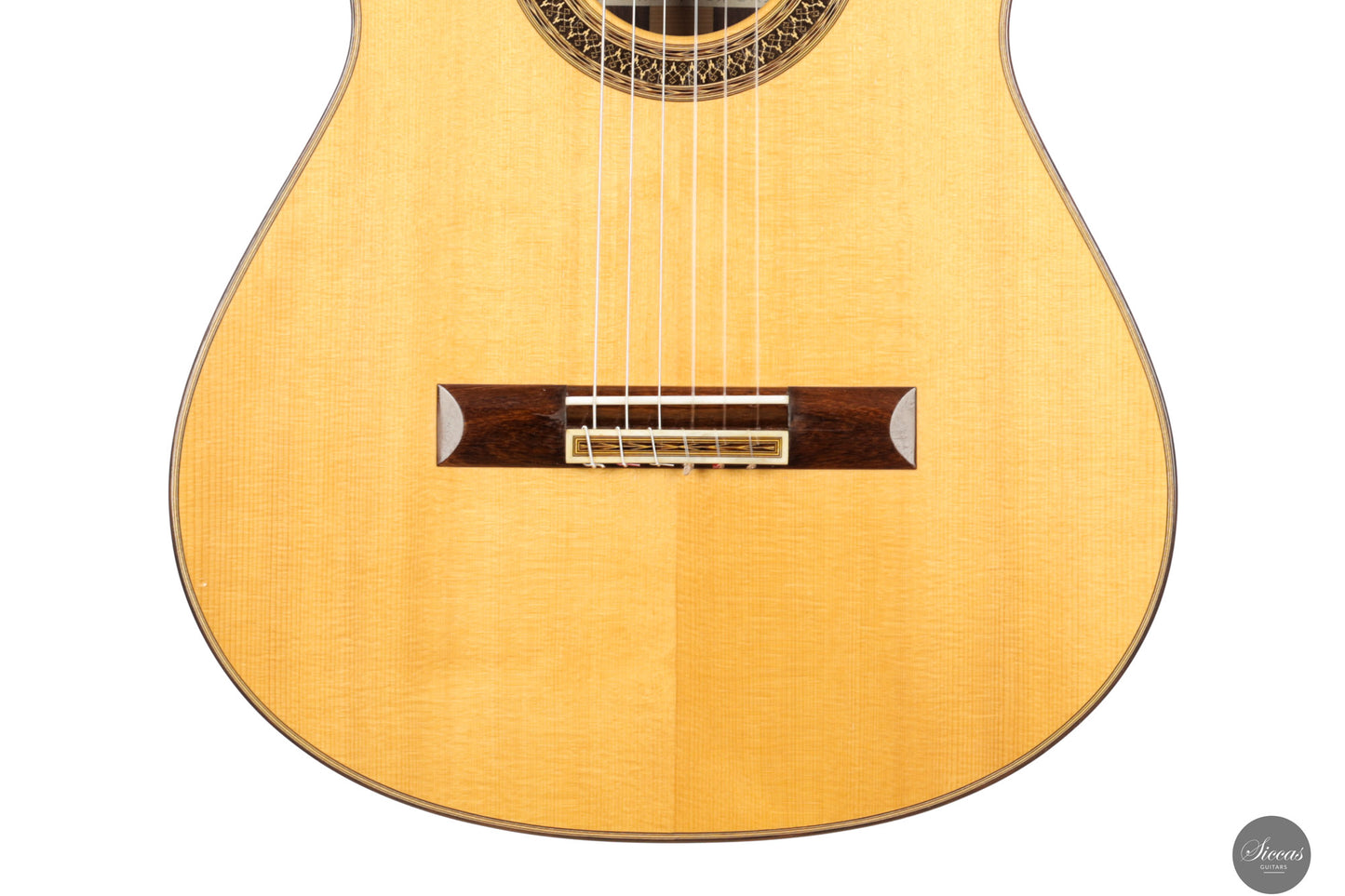
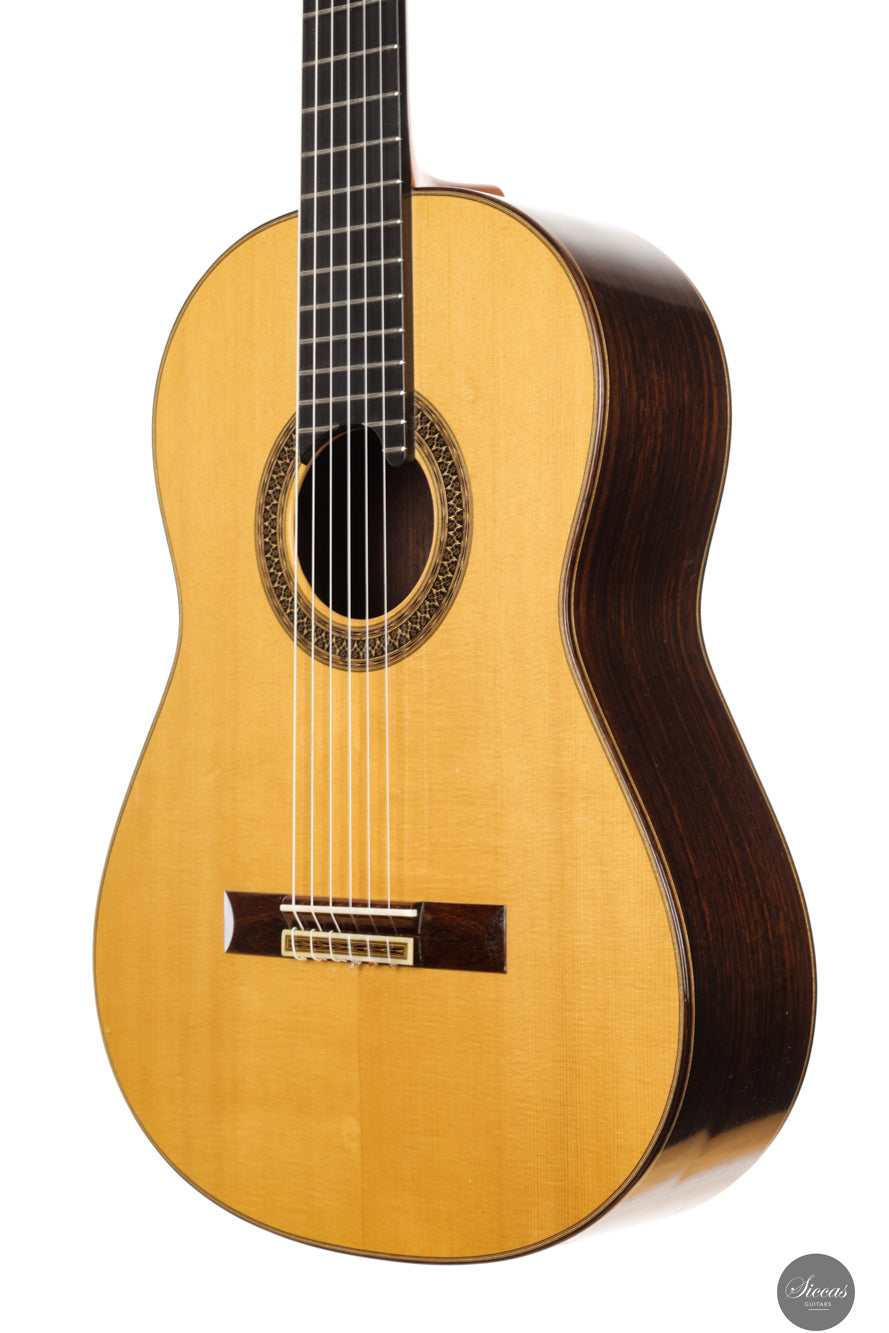
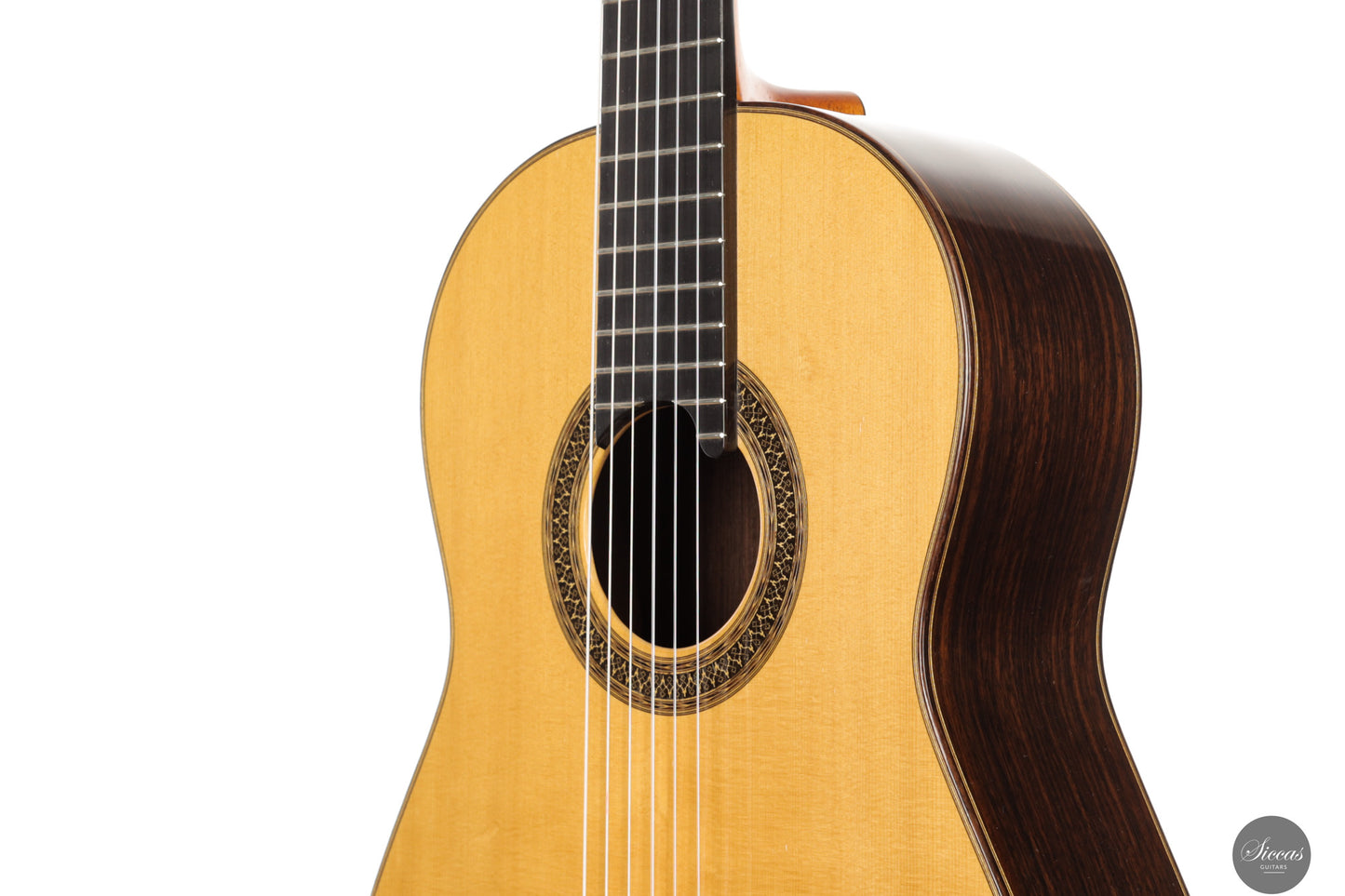
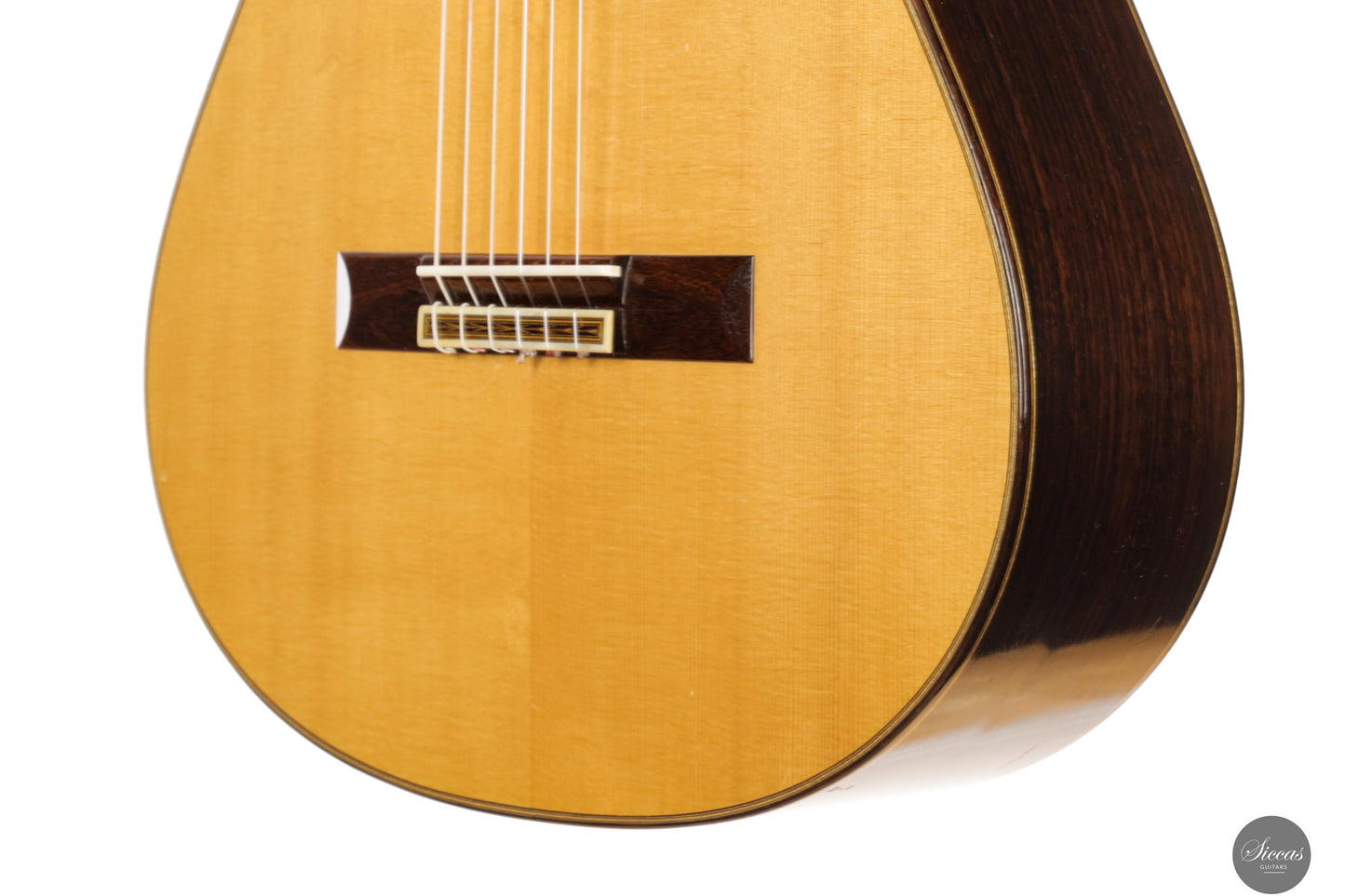
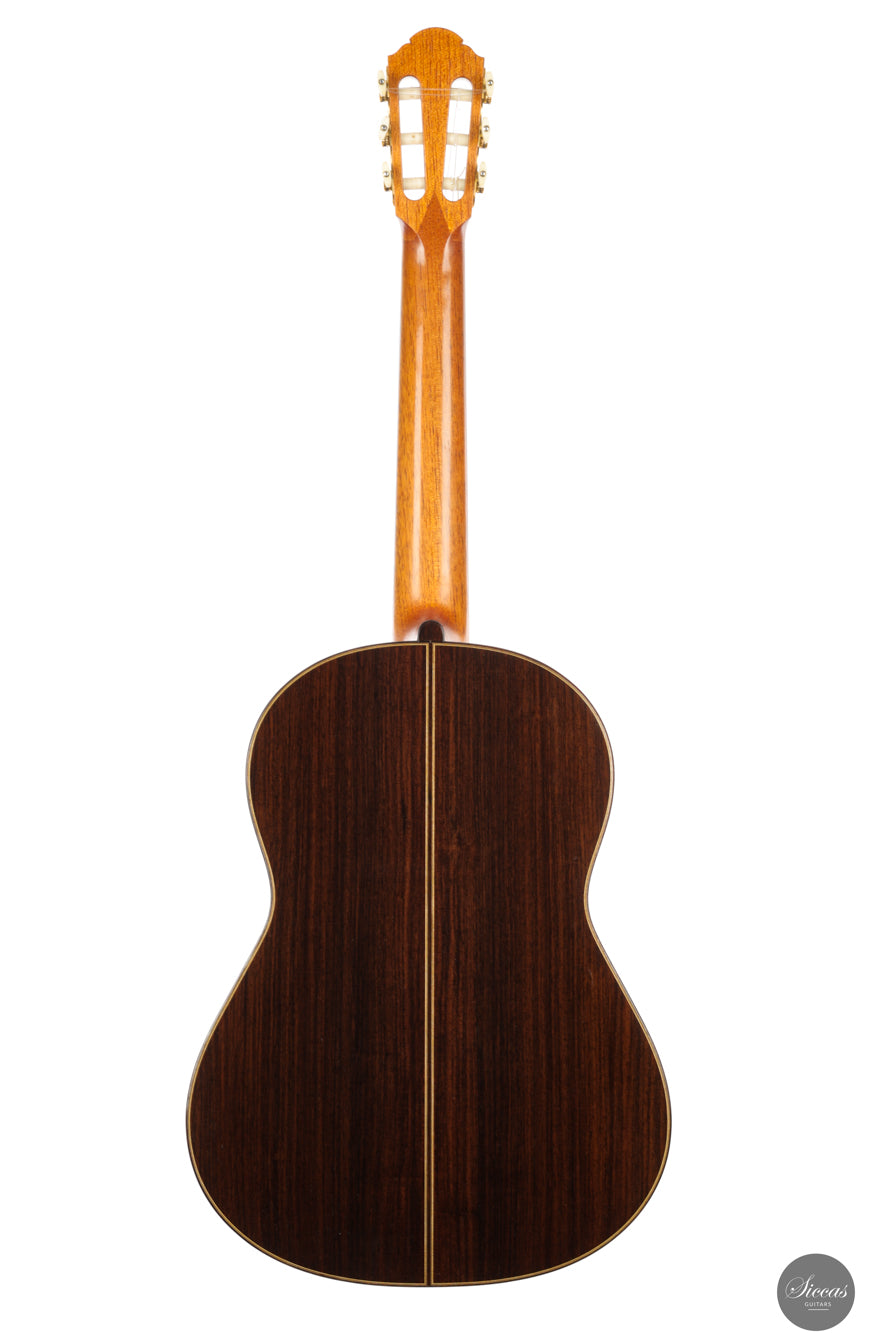
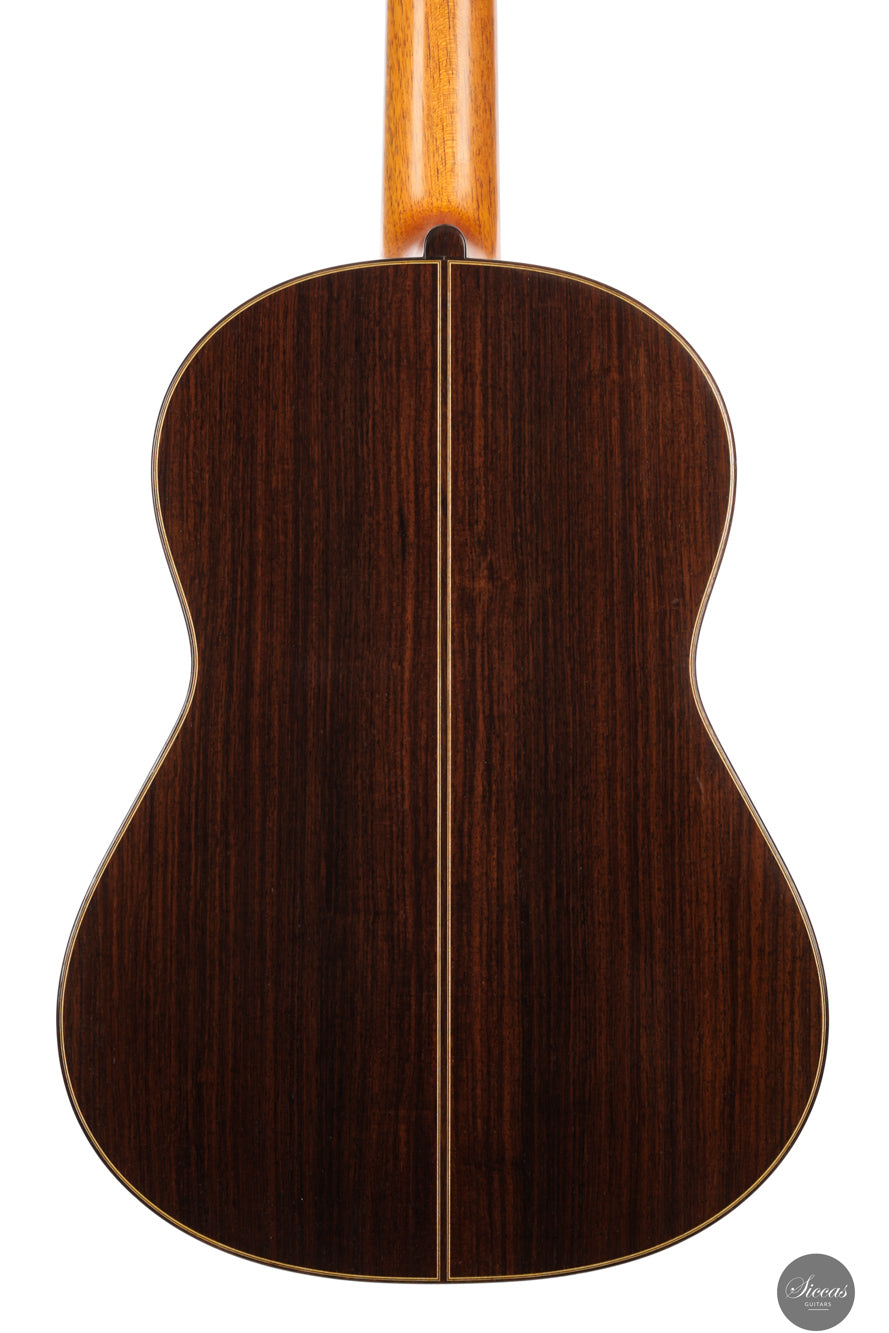
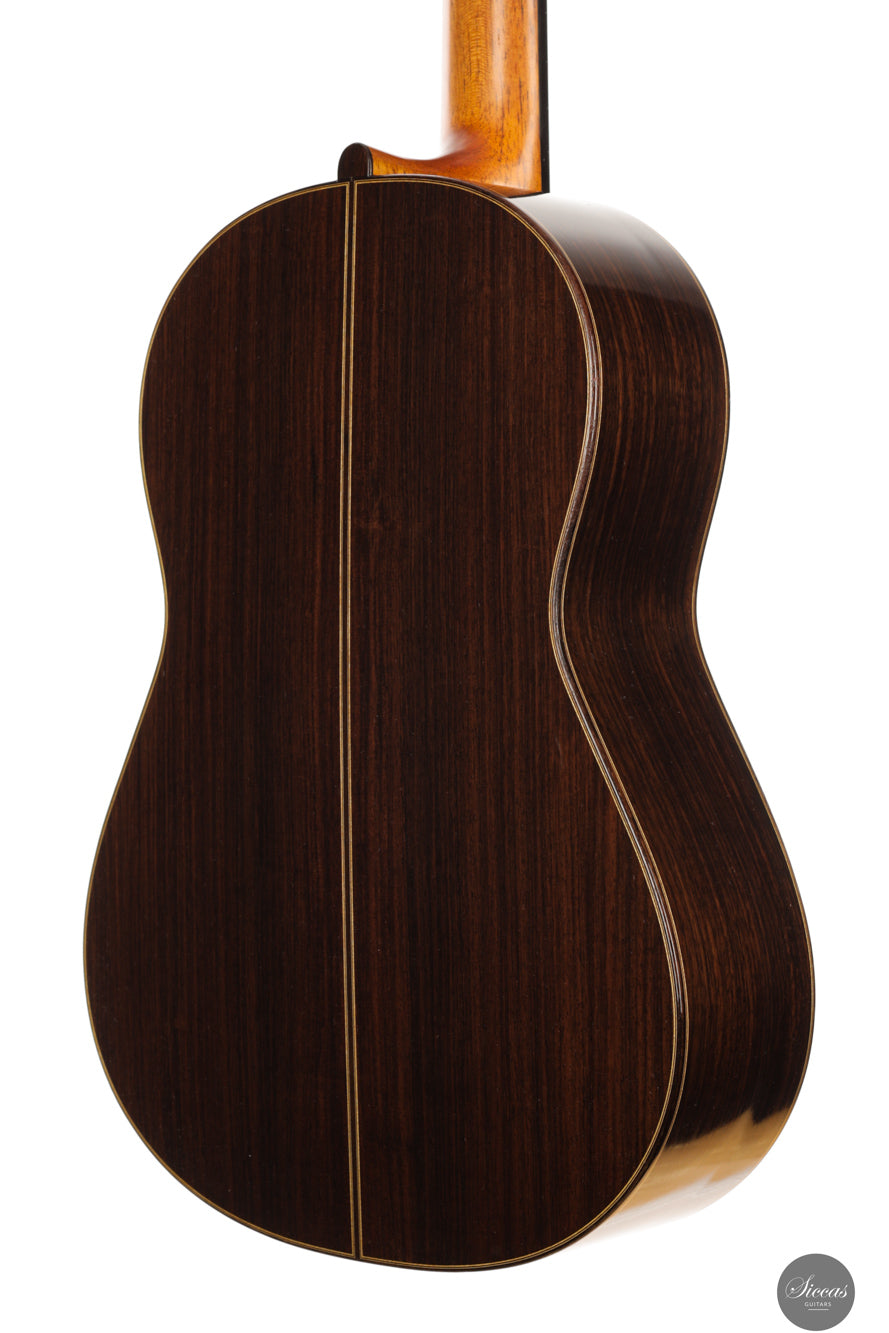
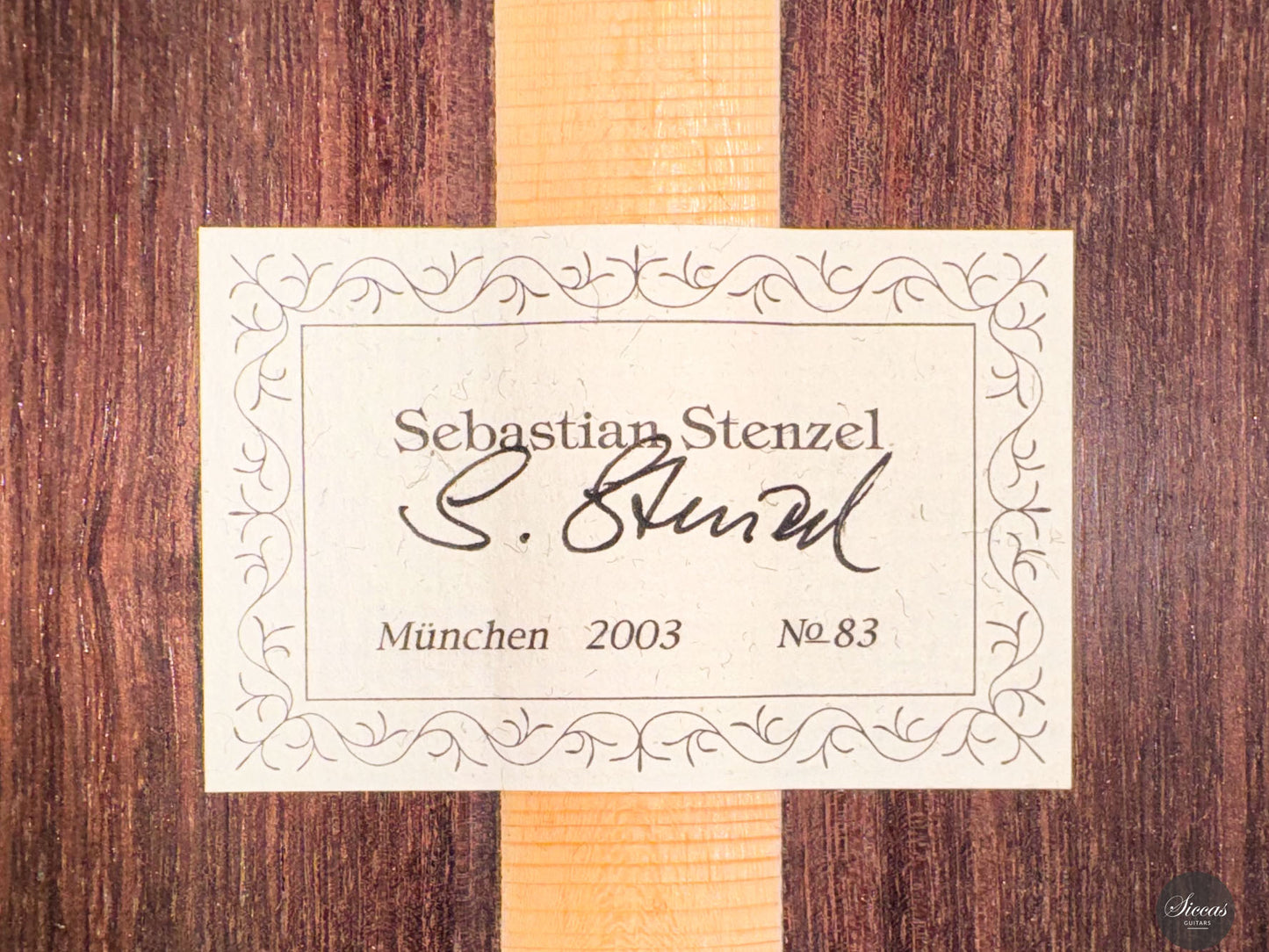
Video overview


More details about the guitar
About the luthier
Sebastian Stenzel has been building guitars since 1989, beginning his training at Gert Esmyol’s workshop and completing his apprenticeship in 1991. He soon focused on developing his own concert guitar model, and by 1996 had opened his workshop in Munich. He was awarded the Bavarian Government’s Master’s Prize in 1998 and has taught guitar-making theory at the Mozarteum Salzburg since 2002. Since 2011, he has continued his work in Emmendingen. Stenzel is known for instruments that reflect his own ideal of sound: “sonorous, floating basses, a warm, creamy mid-range and lyrical, singing trebles.” His guitars are finely tuned for dynamic flexibility and tonal subtlety, yet remain direct and playable, crafted with exceptional precision and artistic sensibility.
About the guitar
This 2003 concert guitar, No. 83, reflects Sebastian Stenzel’s Hauser-inspired design with thoughtful deviations that enhance comfort and response. The 640 mm scale length, 50 mm nut width and light 1.4 kg weight make the instrument highly ergonomic. The playability is further elevated by its agile response and well-balanced action, making it suitable for players seeking both physical ease and tonal nuance.
Tonally, this guitar features the expansive, airy basses that both player and audience can feel, a hallmark of Stenzel’s voice. The spruce top and Indian rosewood body provide a clean, singing upper register and a rich, stable midrange. The basses are especially reactive and bloom beautifully under pressure, giving the instrument impressive dynamic range. The Reischl tuners (successor to Landstorfer) add functional precision and historical continuity. The minimalist heel design adds a modern visual accent to the traditional form, and the thin nitrocellulose finish preserves resonance while showcasing the wood’s natural beauty.
Regular care extends the life of the instrument
Even with careful use, a classical guitar may gradually change in appearance or respond to unstable storage conditions. Have a close look at your guitar regularly and be attentif to changes. If your instrument is suffering from its environement, it will let you know.
Protect Your Guitar: Handle with Care
Be mindful when touching your instrument with greasy or unwashed hands: any skin contact is a small attack on the varnish. Of course, a guitar is made to be played, but taking a few precautions helps preserve its beauty: wash your hands before playing, wear long sleeves, and avoid unnecessary direct skin contact with the body of the instrument.
Pro tip: Avoid playing with a button-up shirt, heavy jewelry, or a belt, as these can scratch the guitar. Also, make sure your guitar case is free of any objects that could damage the instrument during storage.
String care
A good habit to adopt is wiping down your strings briefly after each playing session. This small action significantly extends their lifespan and helps maintain a consistent, comfortable feel under your fingers.
Most importantly, clean strings are essential for keeping your instrument in tune. Corrosion, sweat, and dust can affect the uniformity of the strings and interfere with accurate tuning across the entire fingerboard.
Pro tip: If you're having trouble getting your guitar in tune, it might be time to change the strings. A useful test is to compare the pitch of the 12th fret harmonic with the fretted note at the 12th fret; if there's an unusually large gap between them, your strings may have lost their integrity and should be replaced.
Keep Your Shellac Finish Shining!
Got a guitar with a shellac (French polish) finish? Here's a simple trick: Take a clean microfiber cloth and gently breathe on the surface to create a light mist. Then, softly rub to remove fingerprints, sweat, and grease. That’s usually all it takes to keep it looking great, no products needed!
Pro tip: Every few years, treat your guitar to a check-up with a luthier to keep it in top shape.
Storing Your Guitar: Climate Matters
Your guitar can safely stay outside its case, as long as the surrounding environment maintains 42–55% humidity and a temperature between 18–25°C.
Keep in mind that humidity levels can still fluctuate inside the case, especially during seasonal changes.
- Too much humidity may cause overtightened strings and a dull tone.
- Too little humidity can lead to a bulging top, string buzz, or even cracks.
Avoid placing your guitar near radiators, air conditioners, or windows with direct sunlight.
Pro tip: Always close your guitar case while playing. This helps preserve a stable microclimate inside the case, so your instrument is protected the moment you put it back in.


